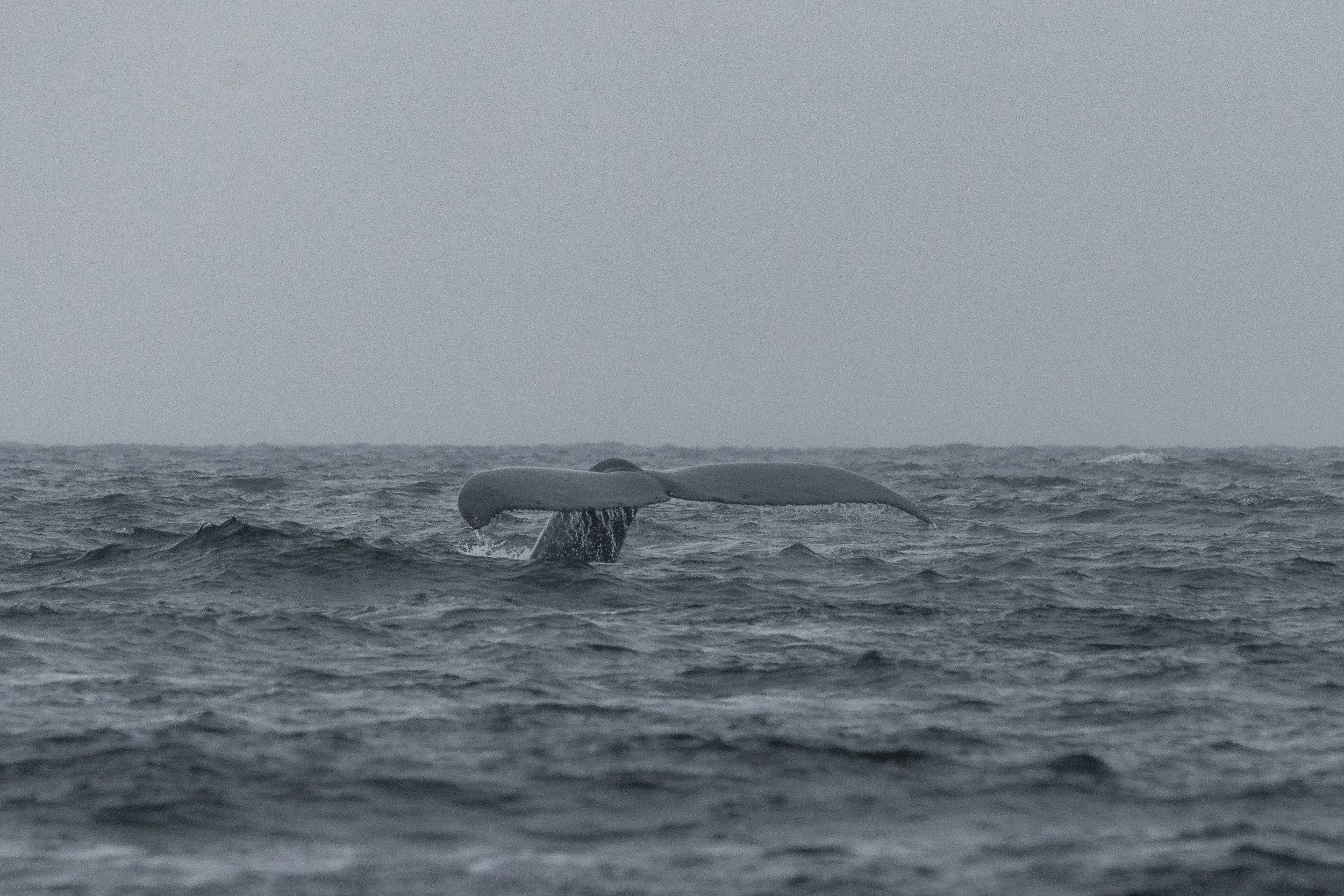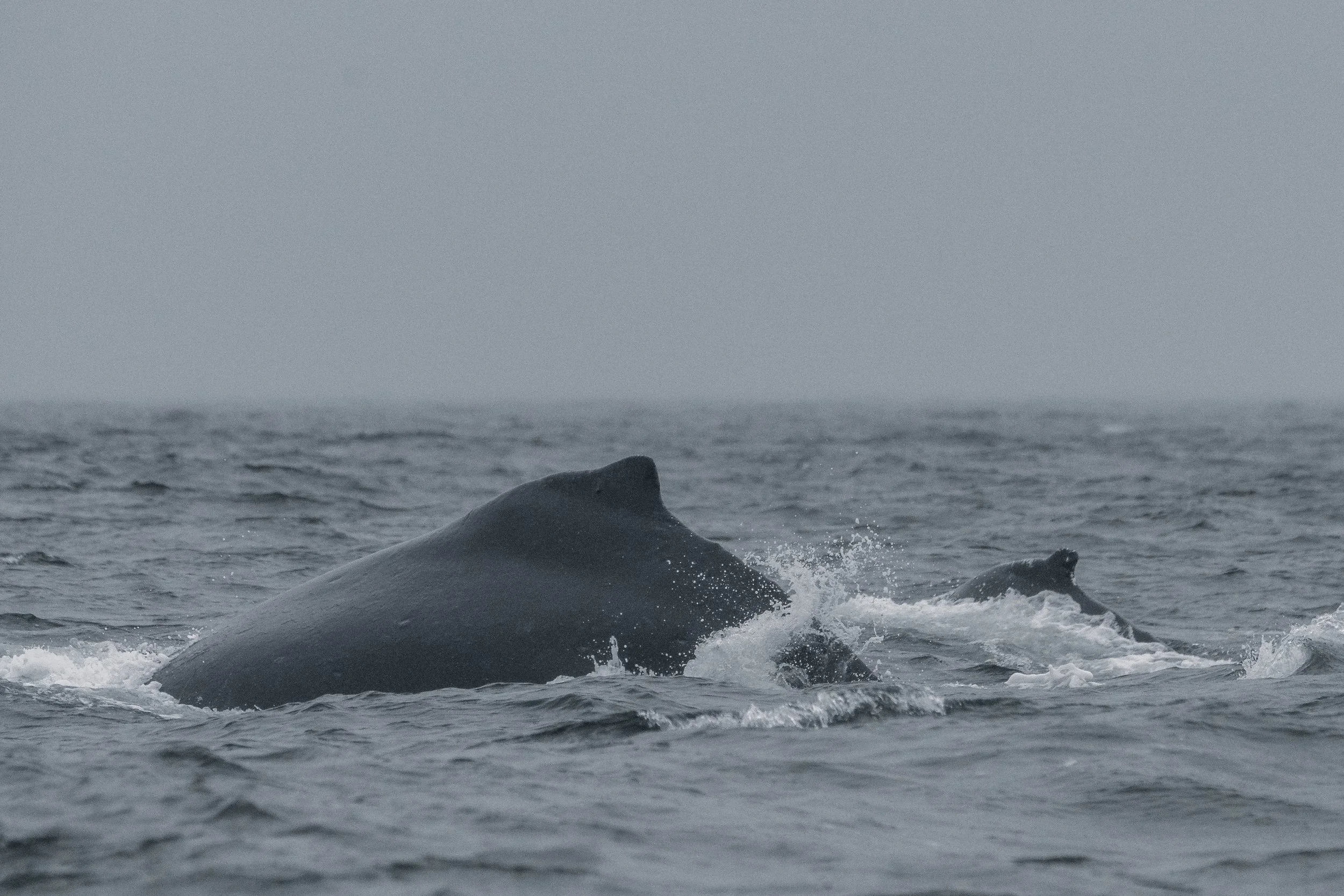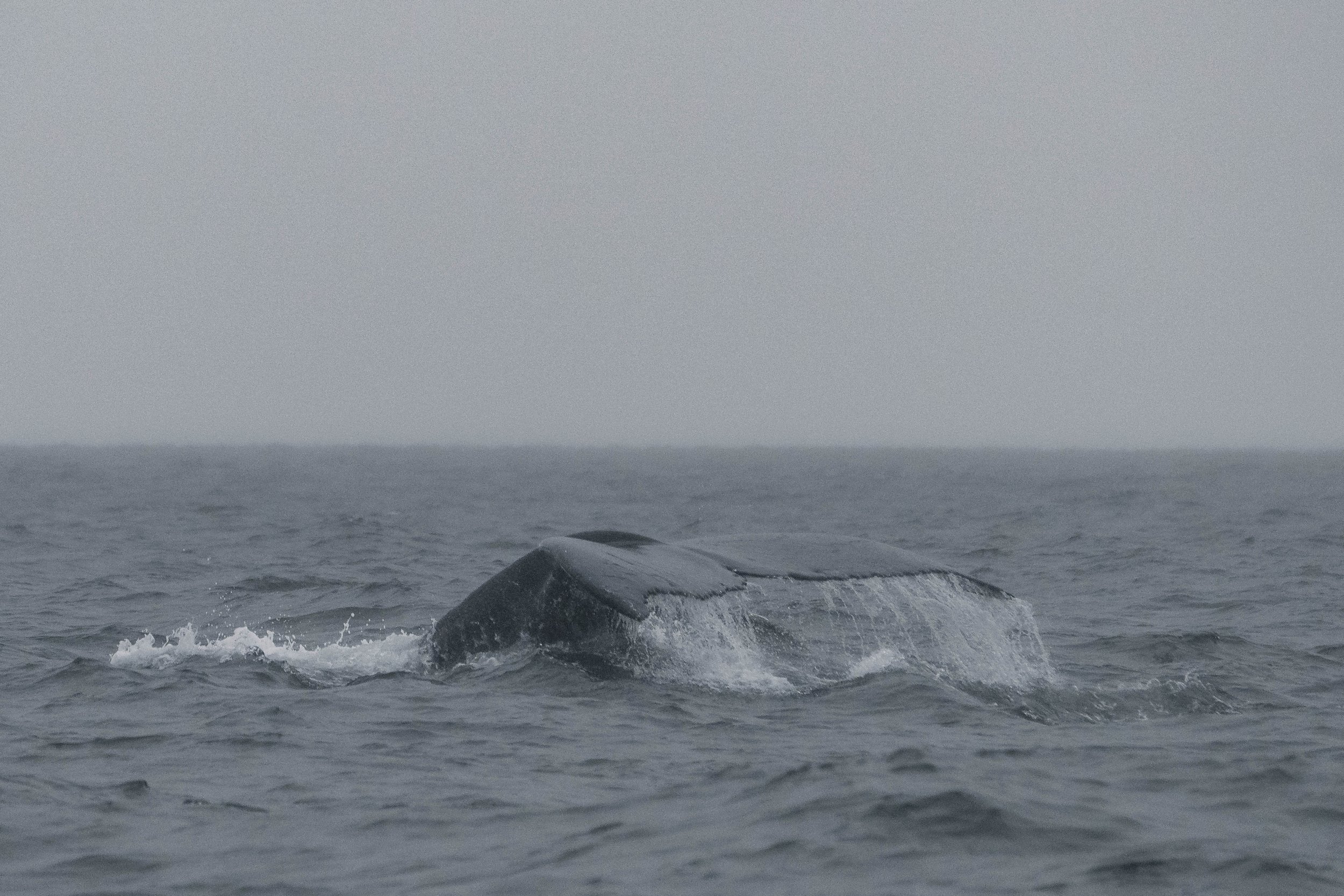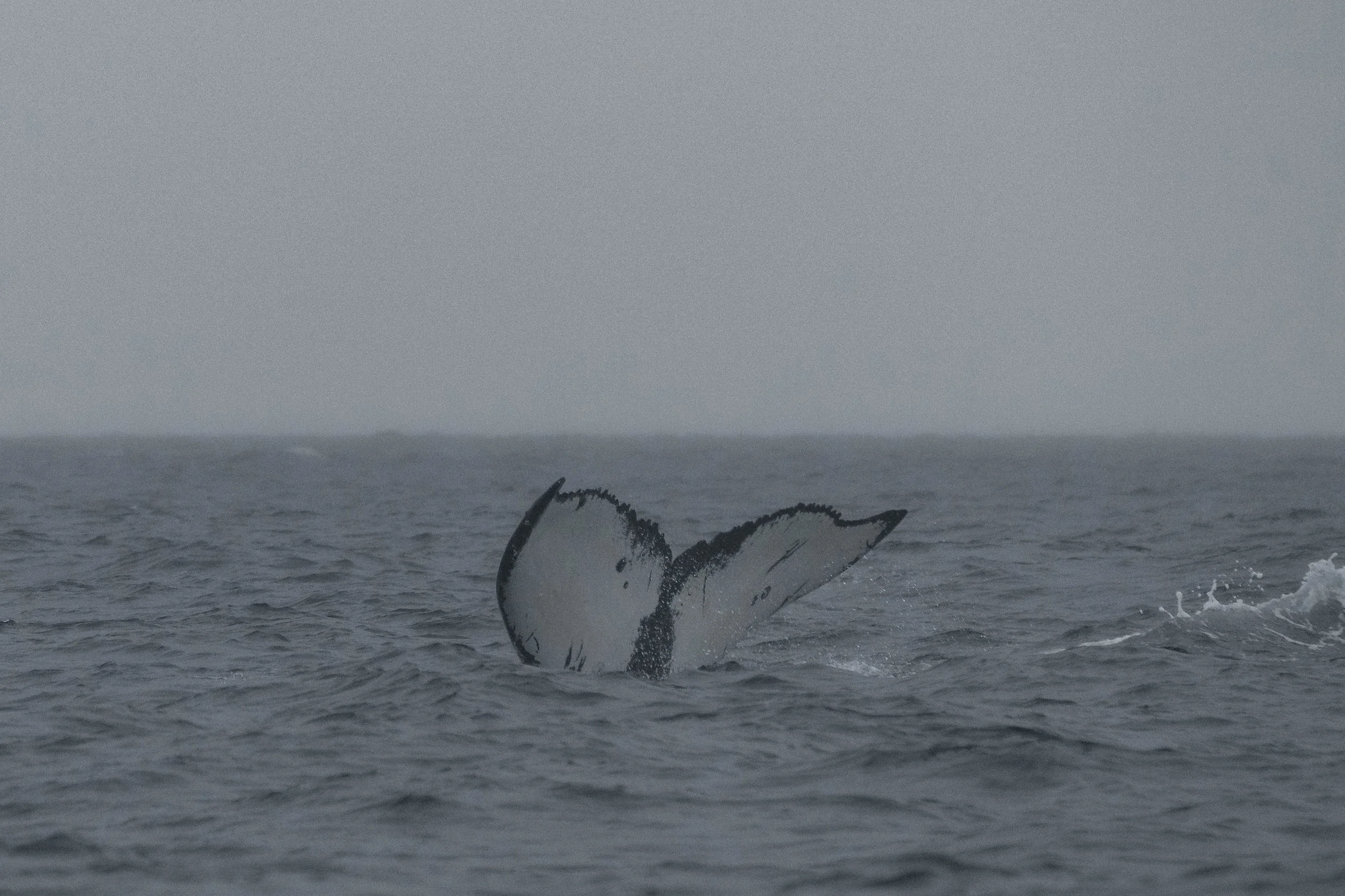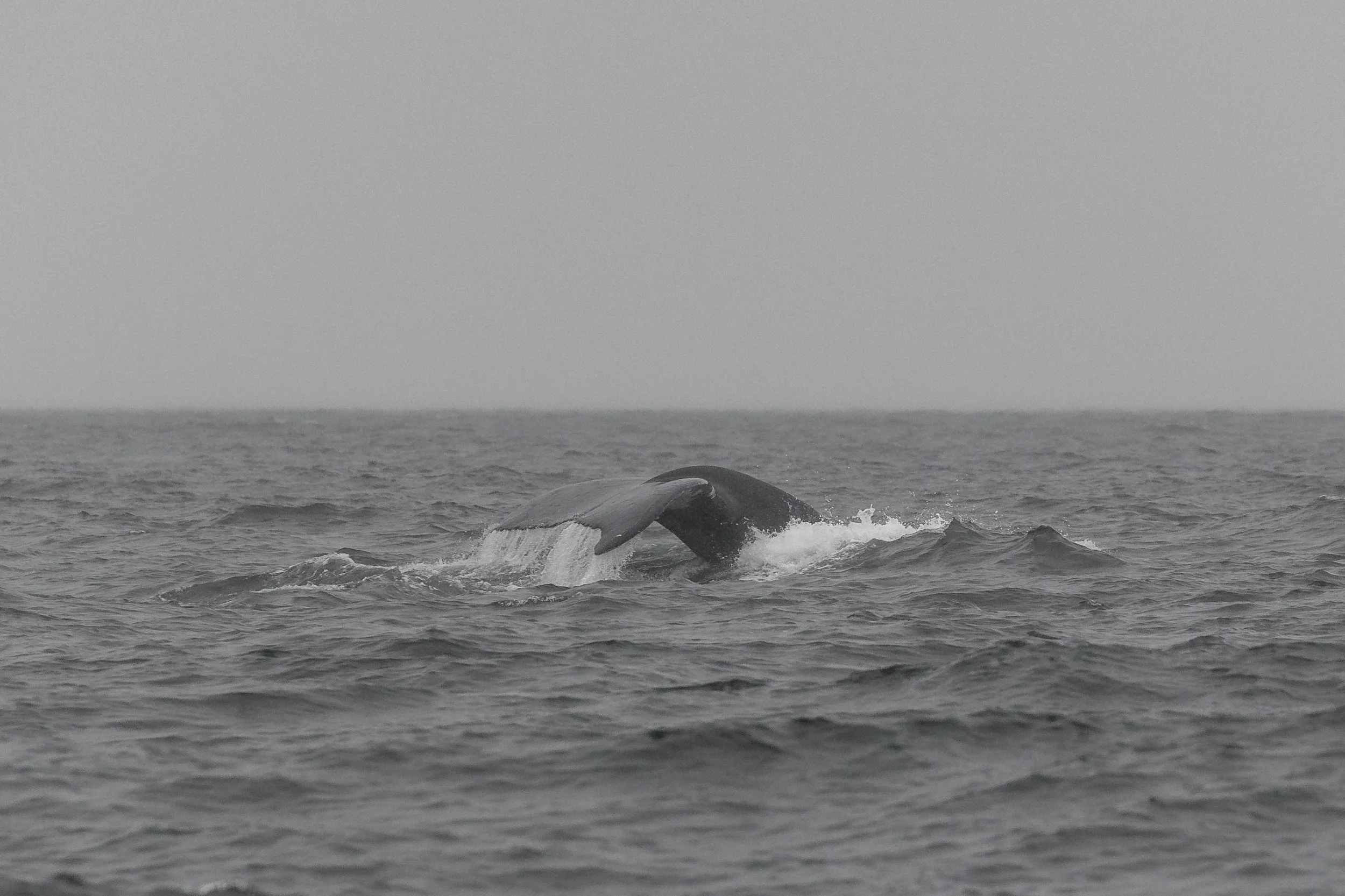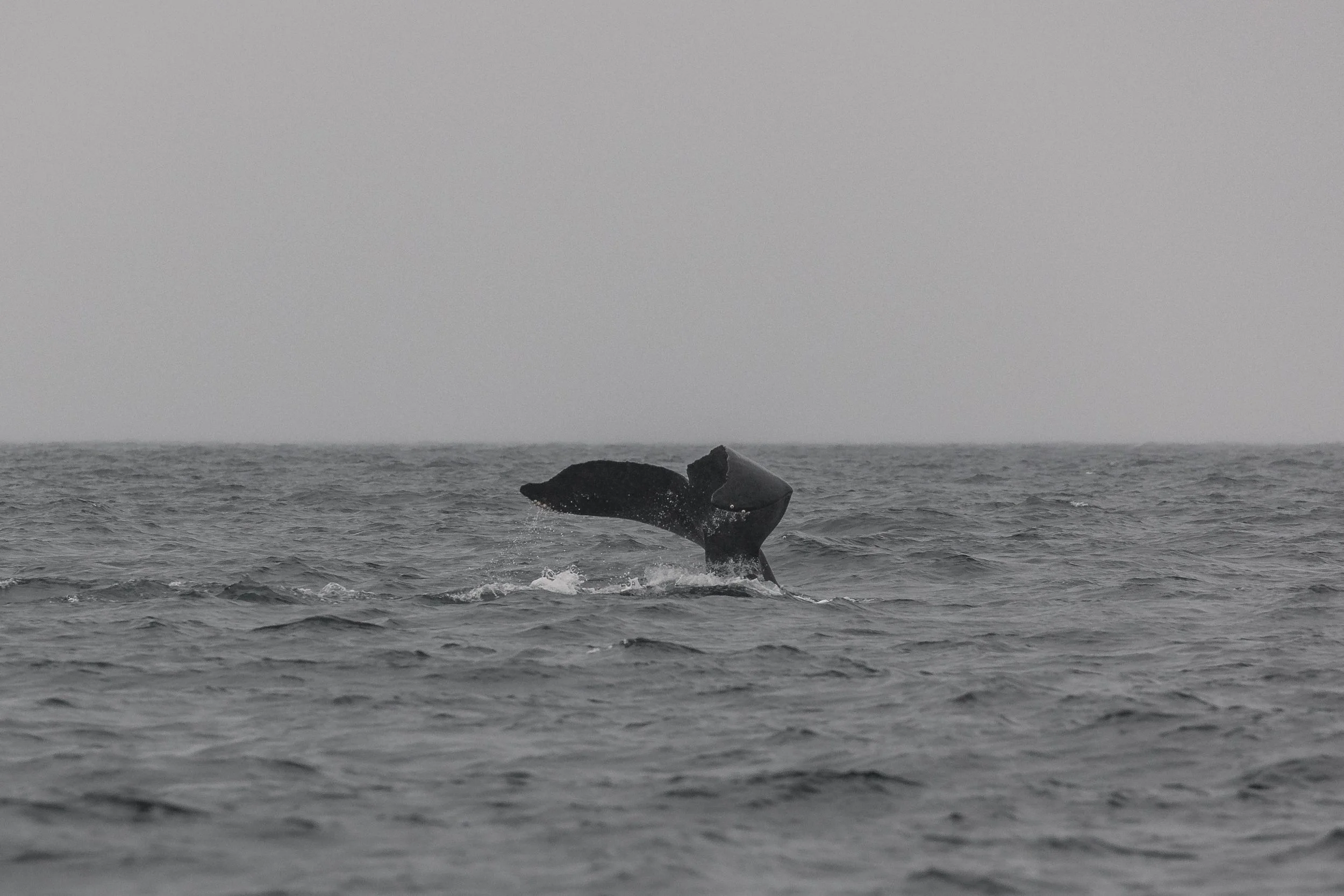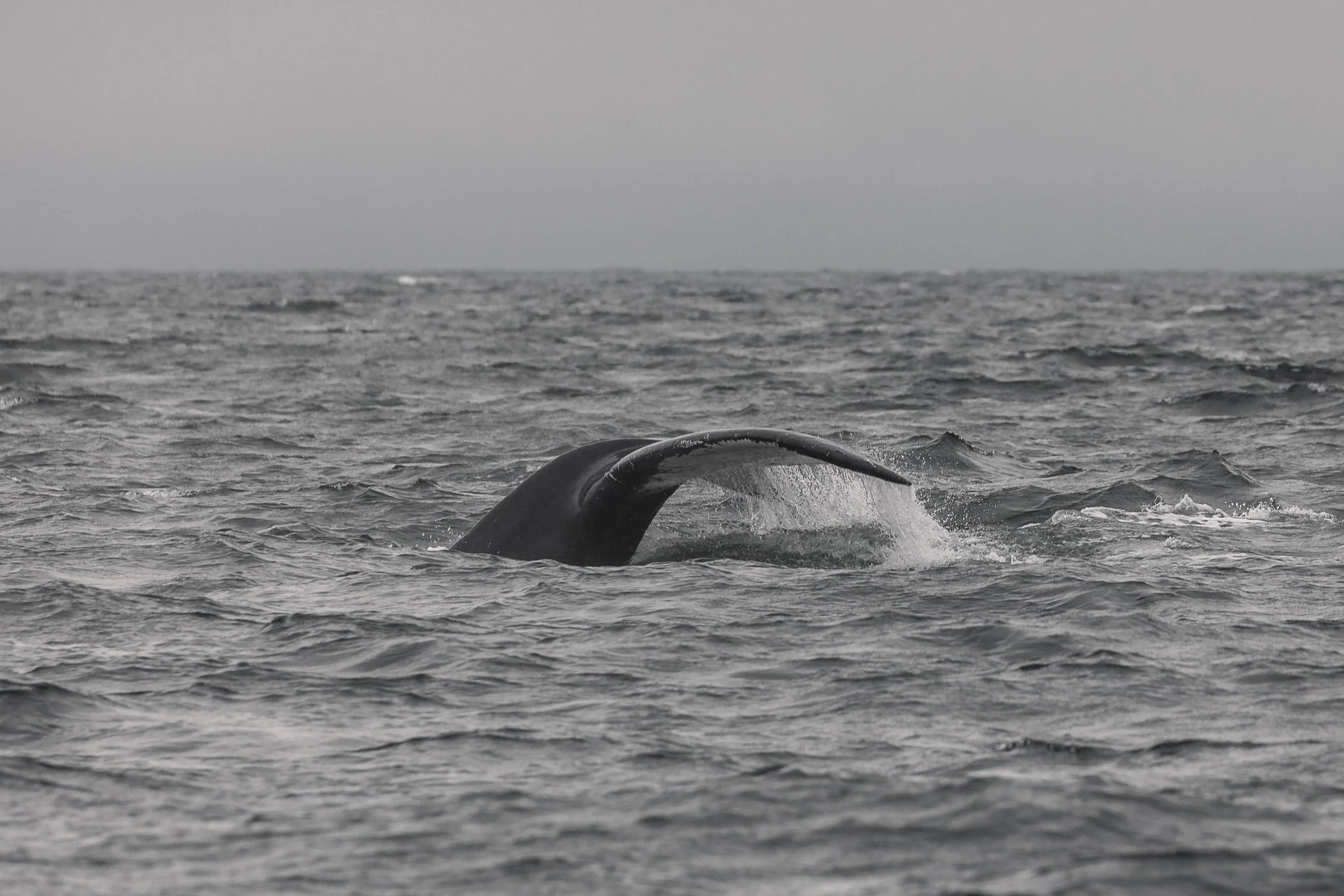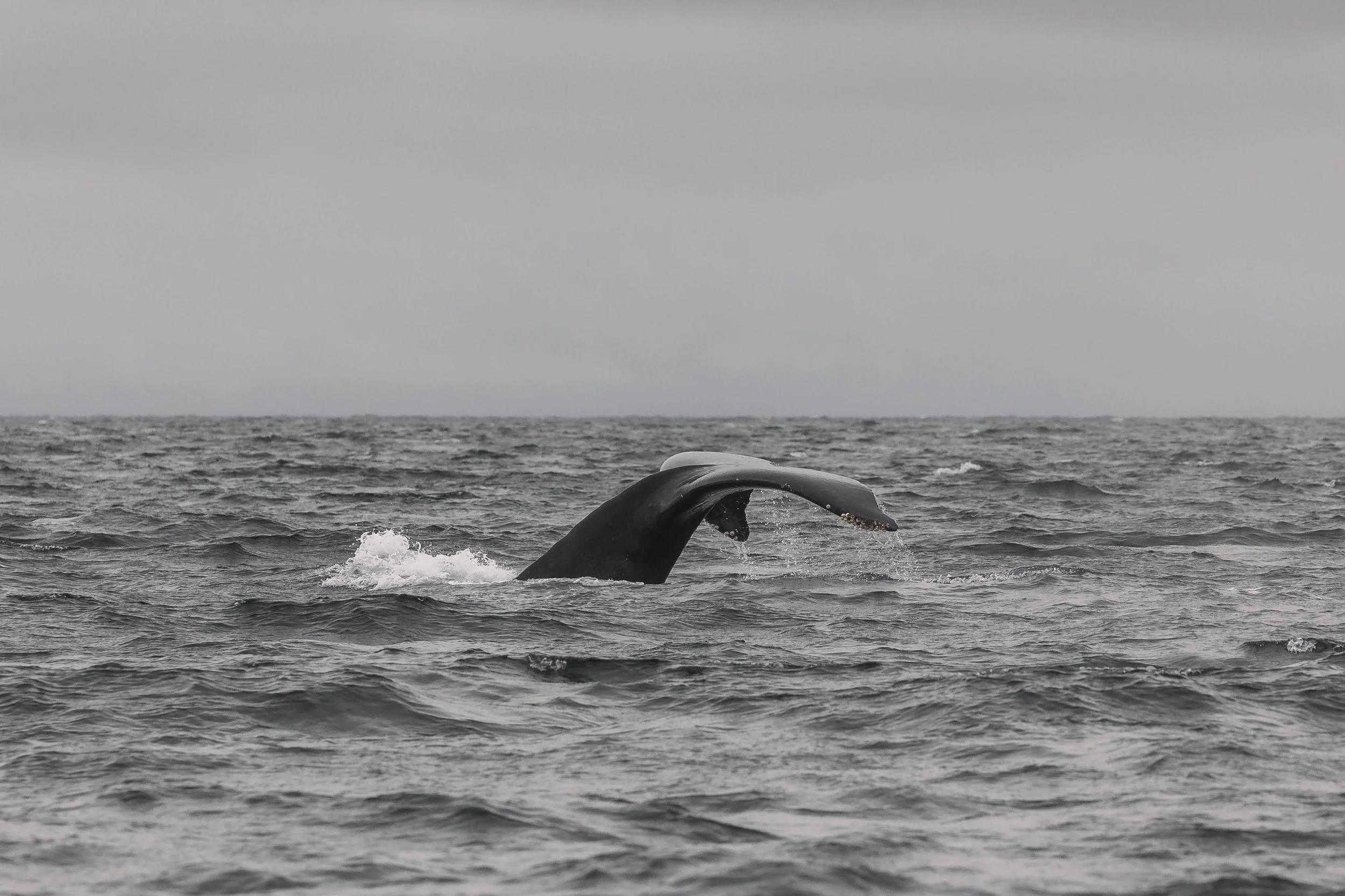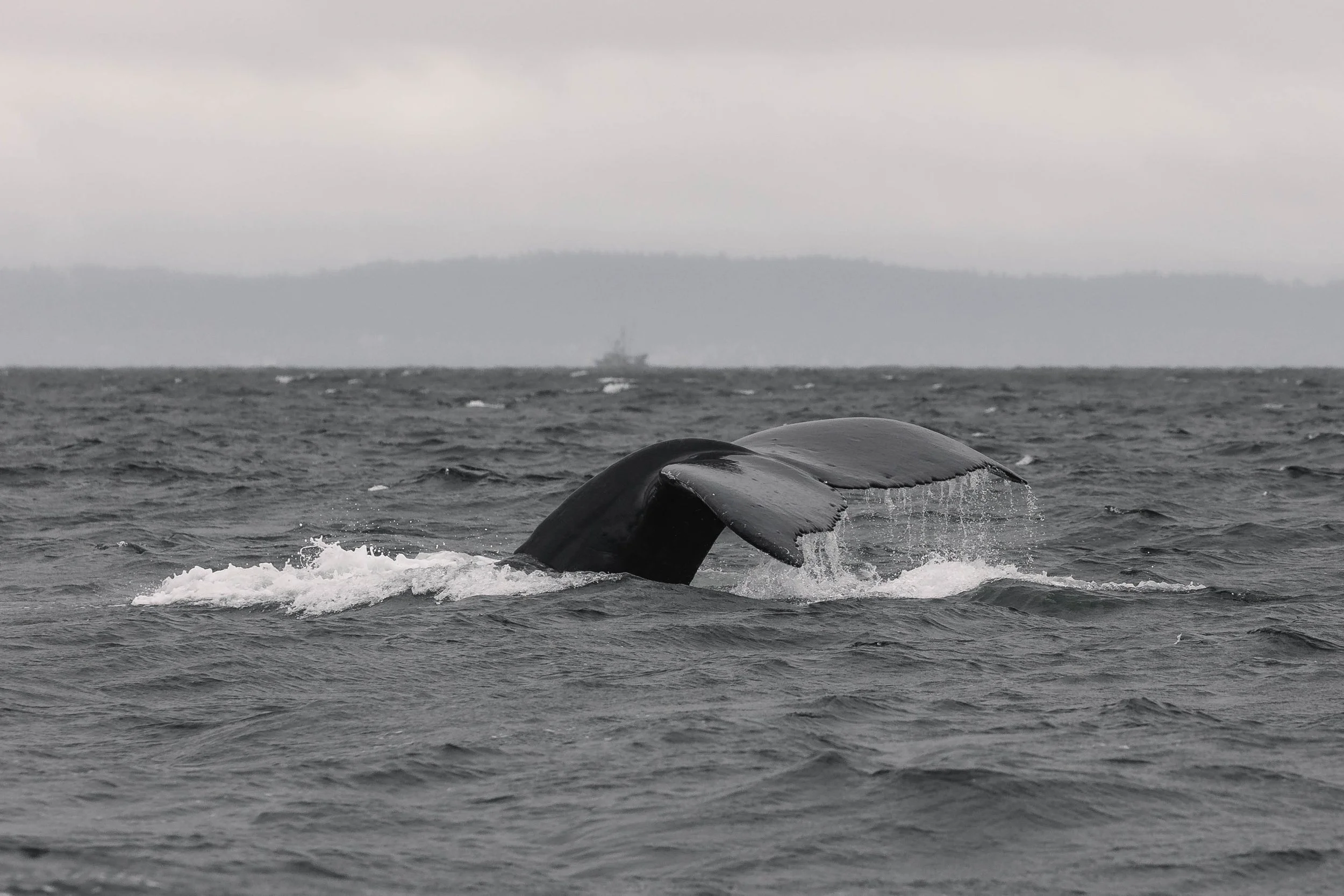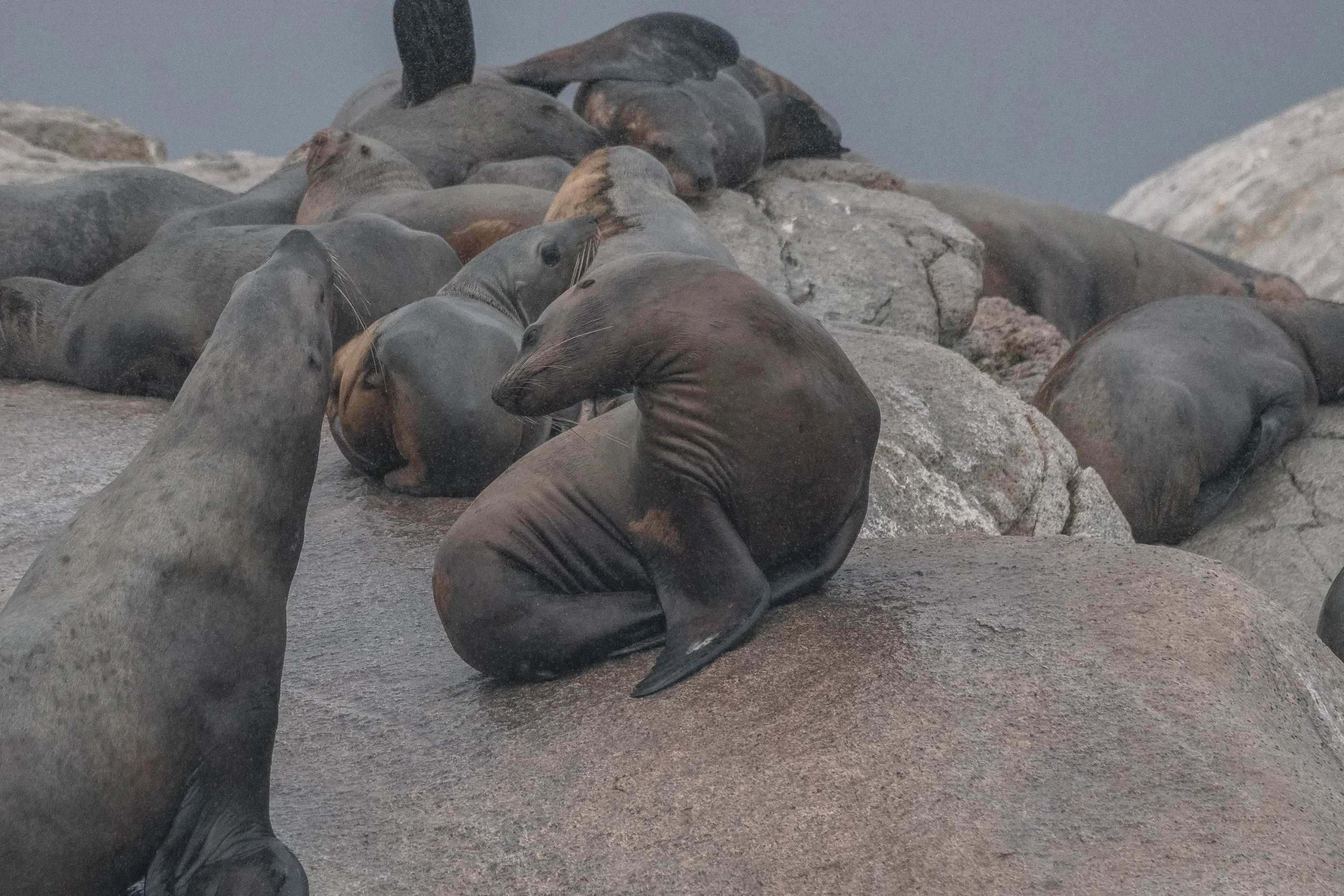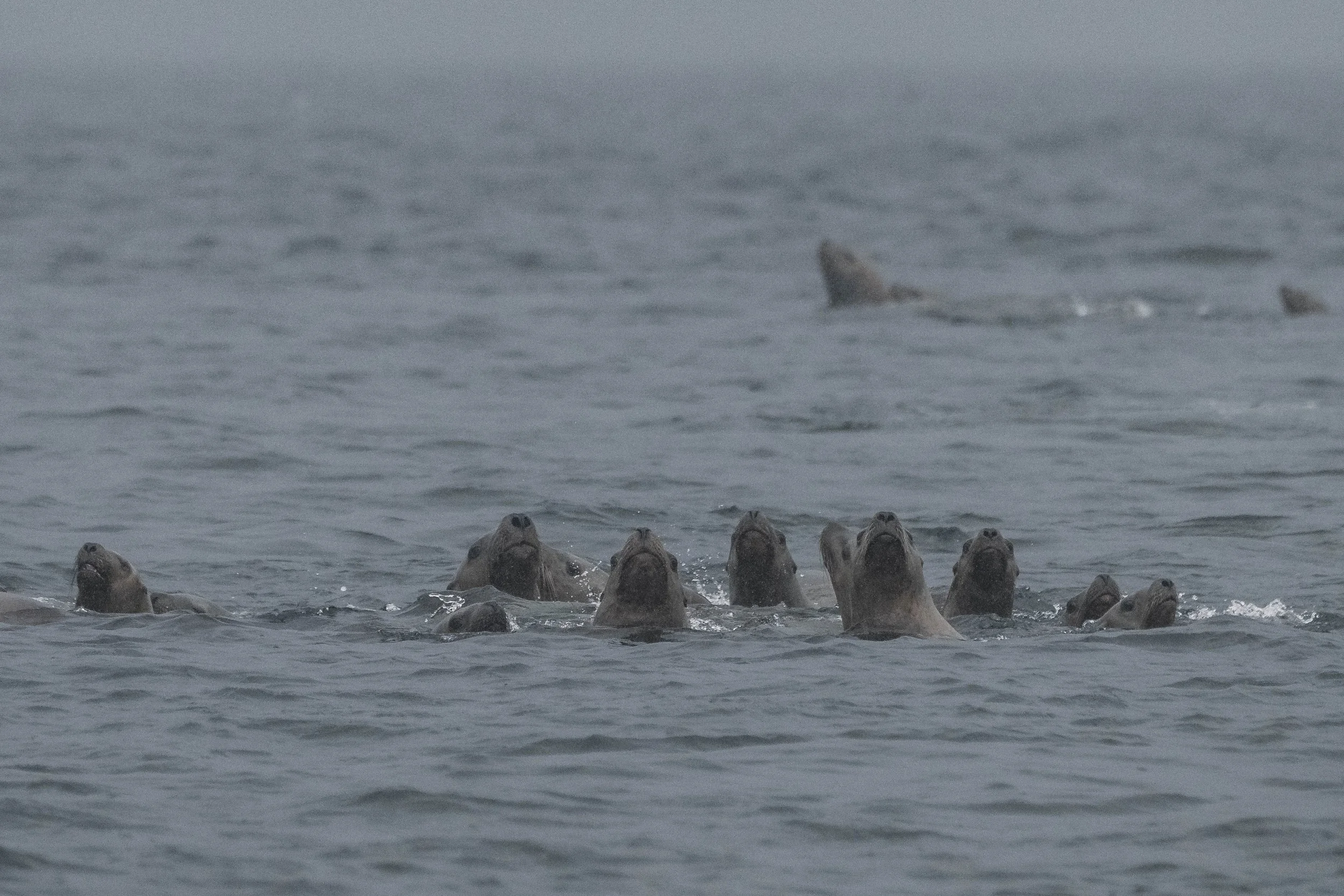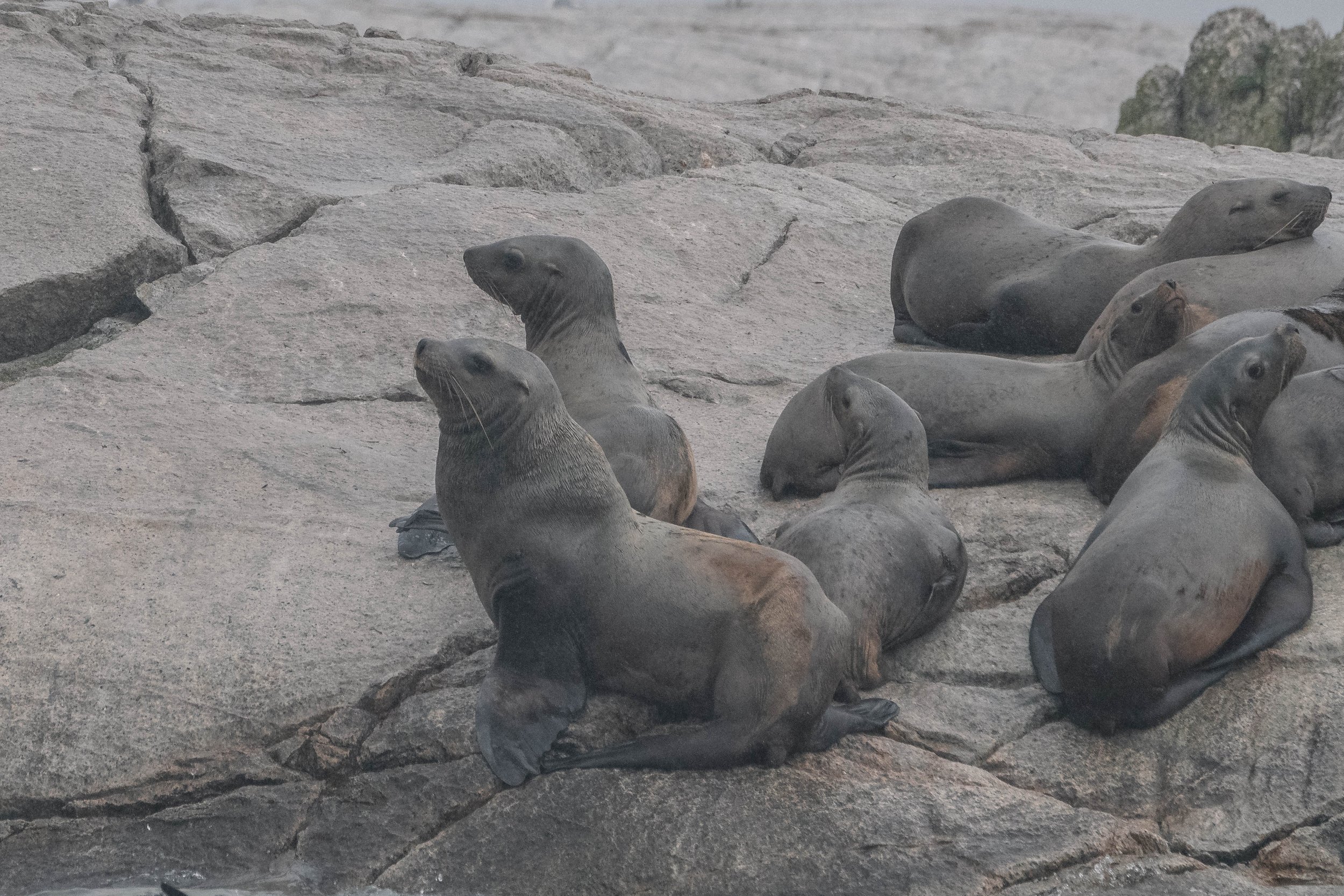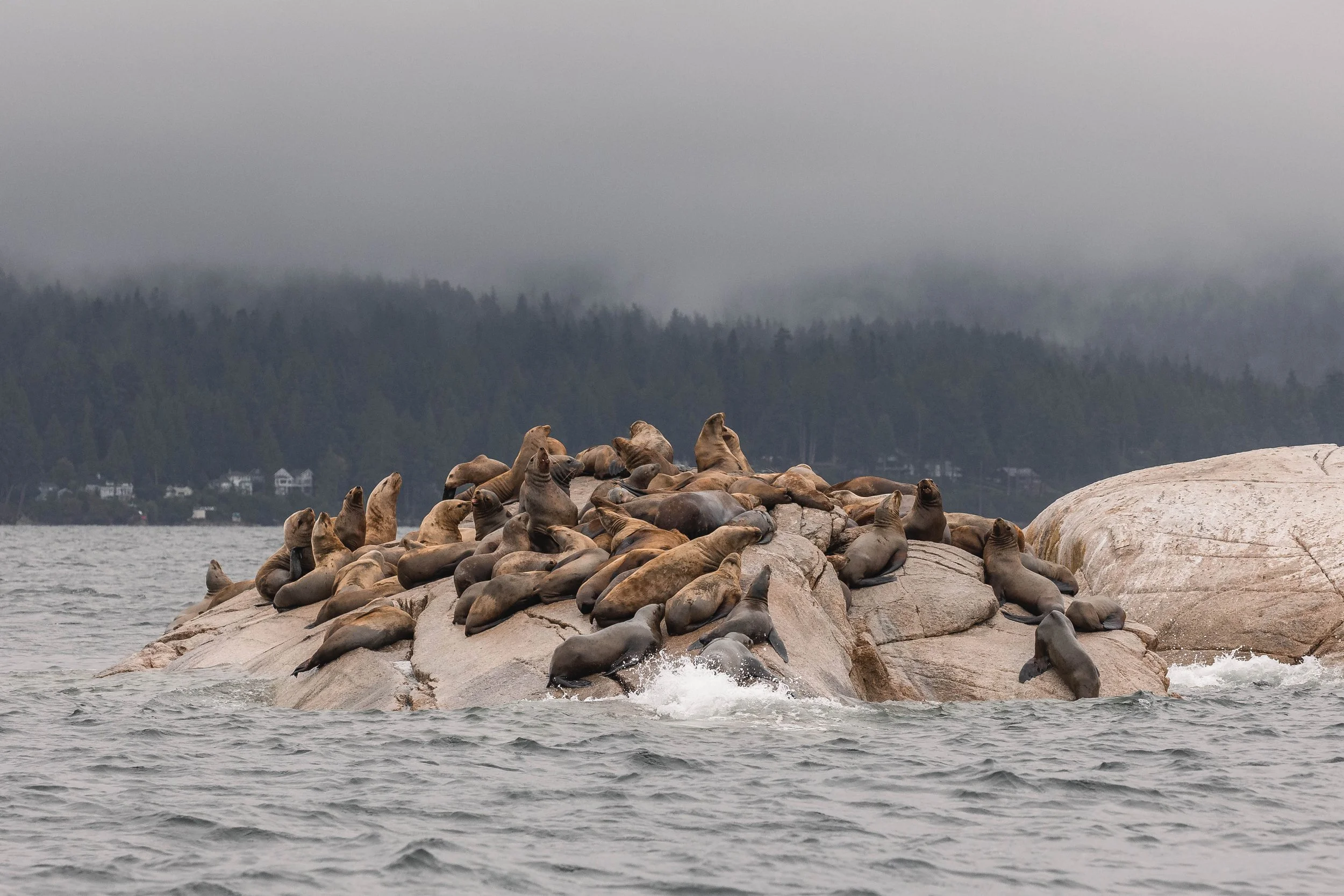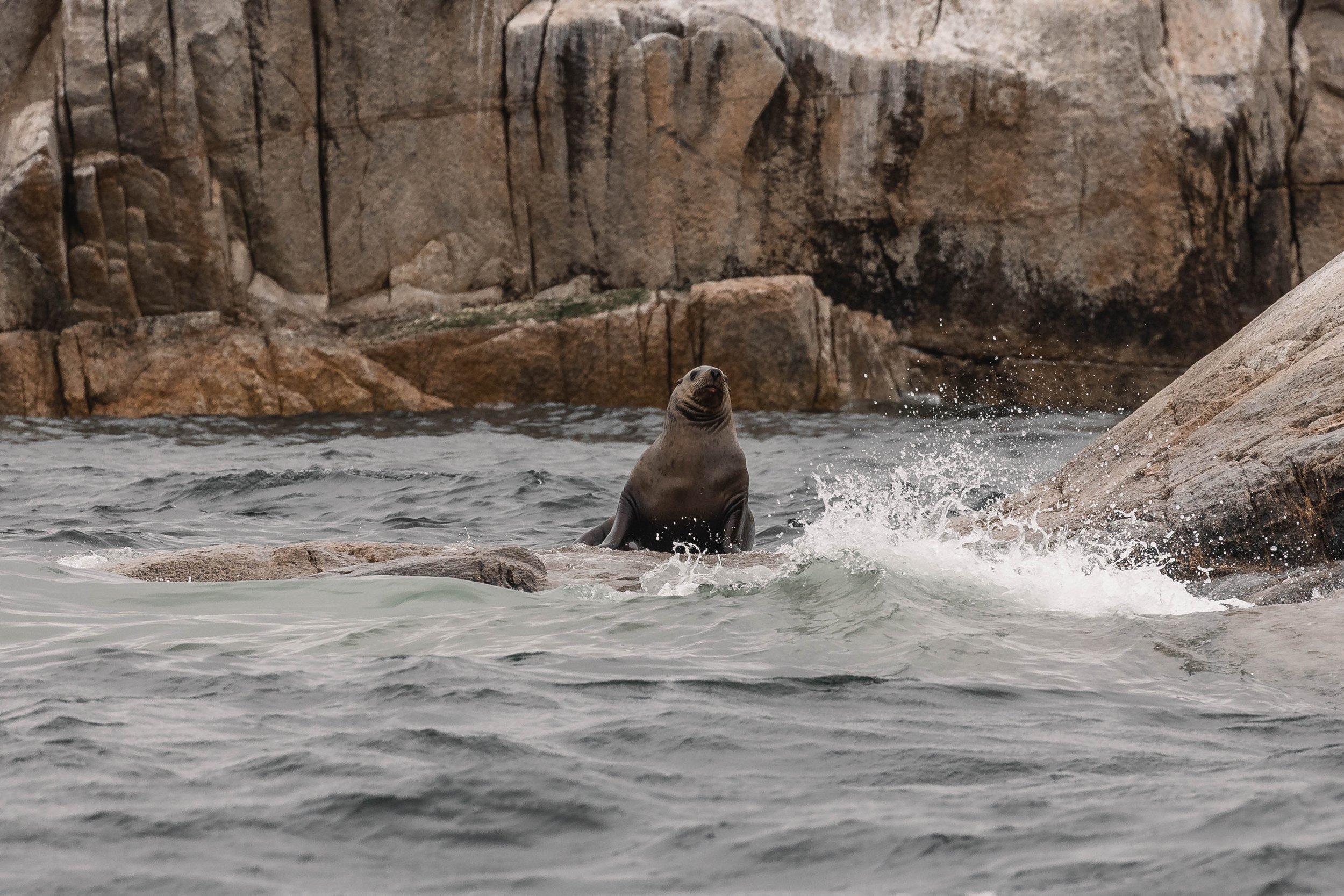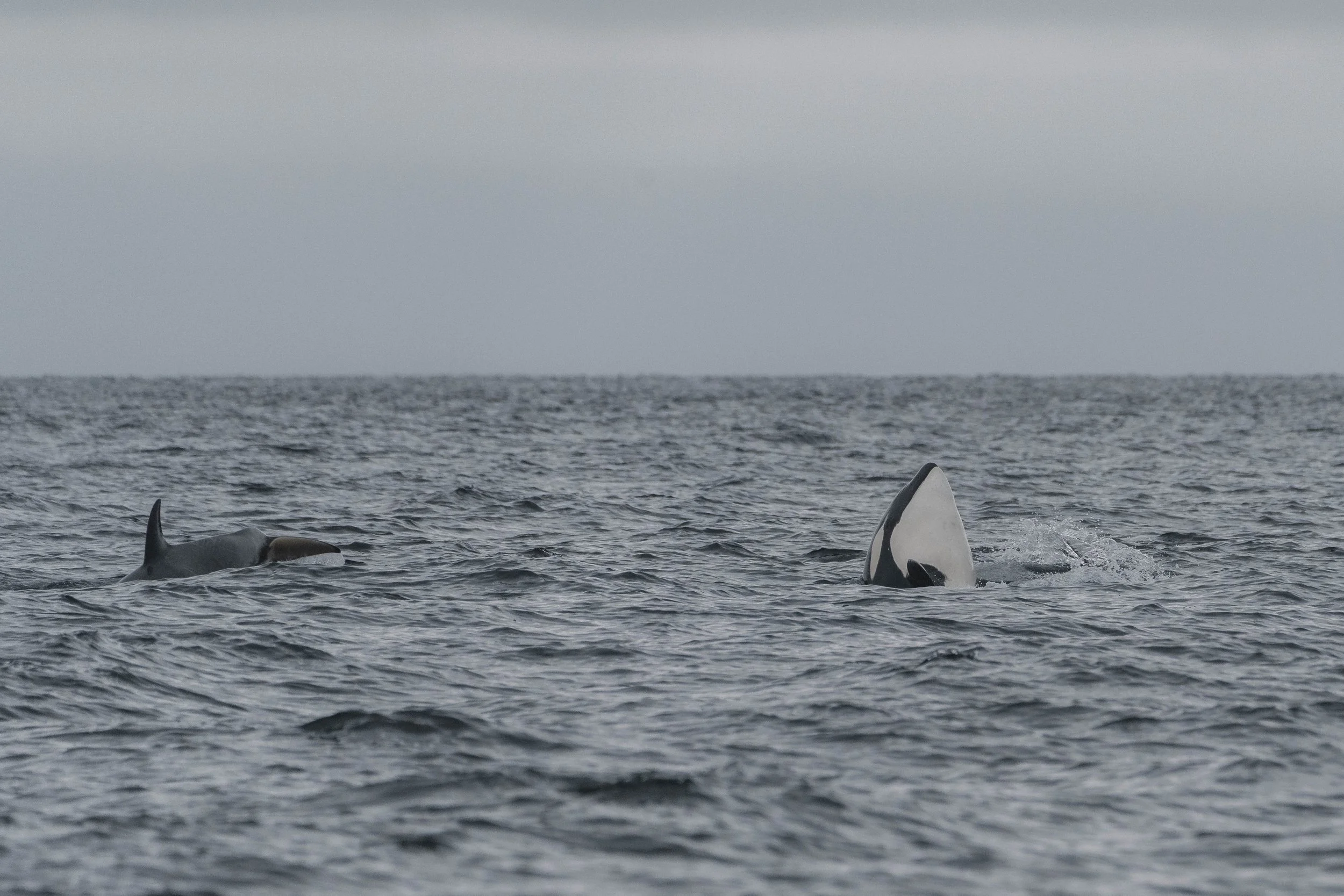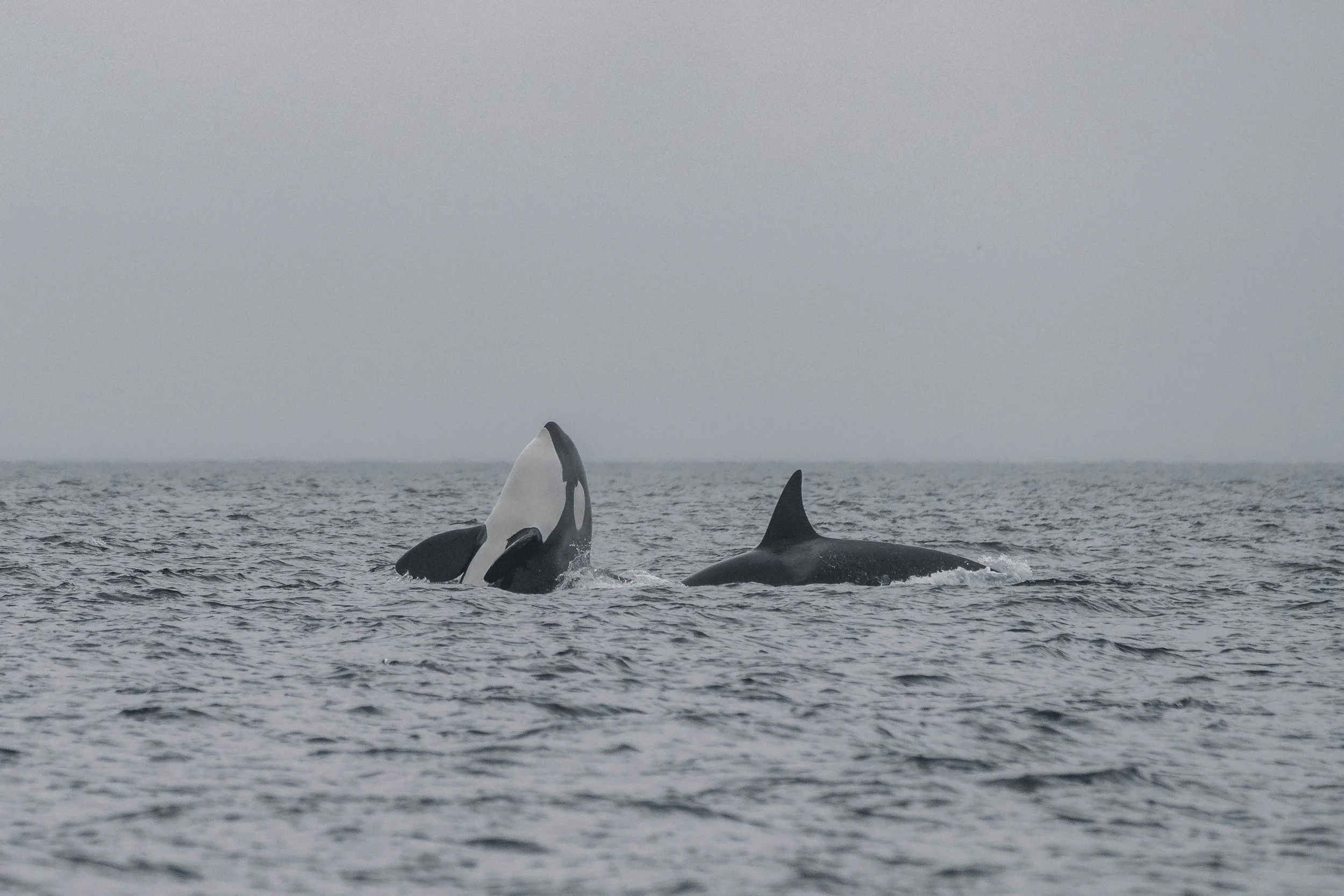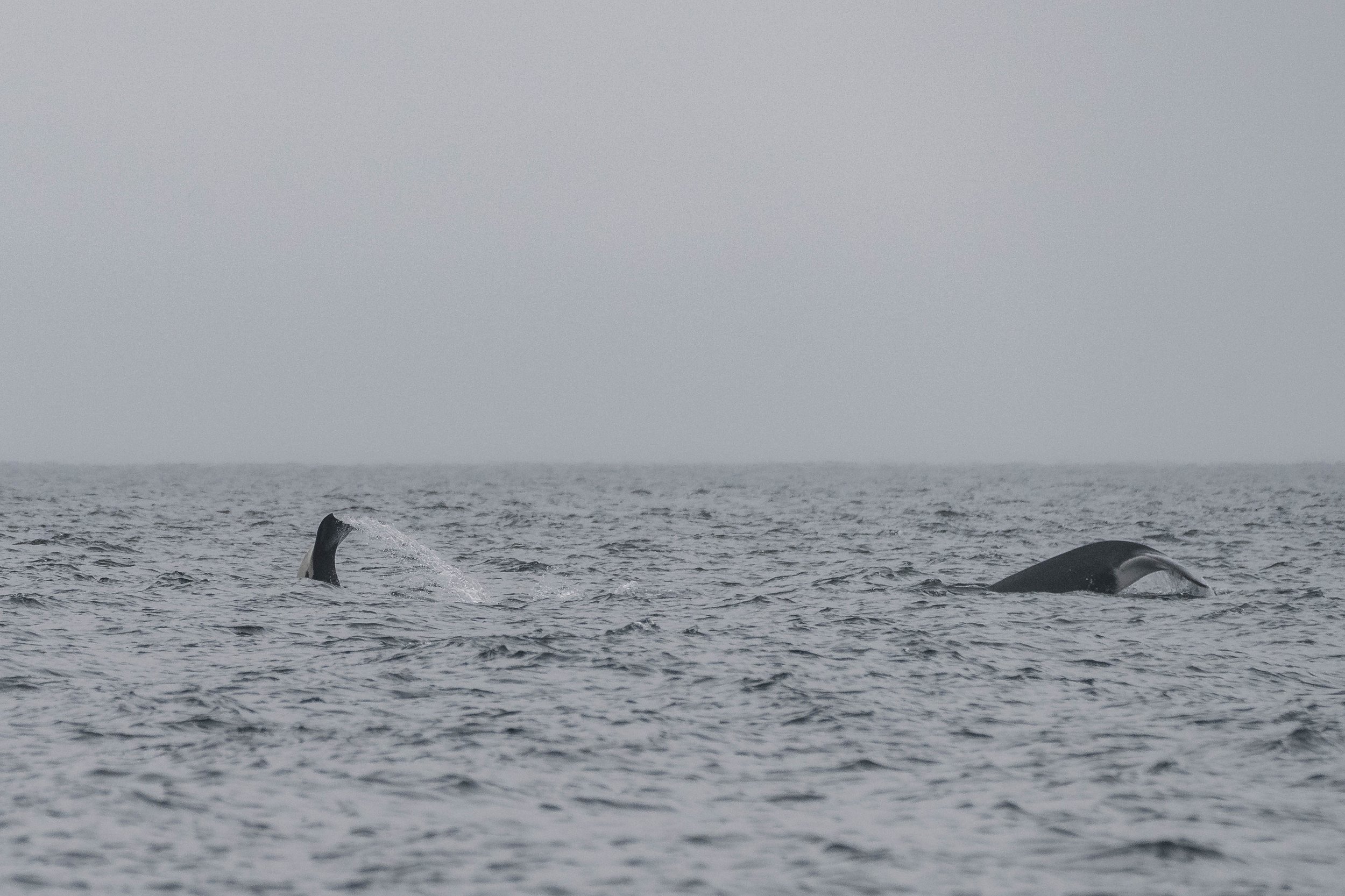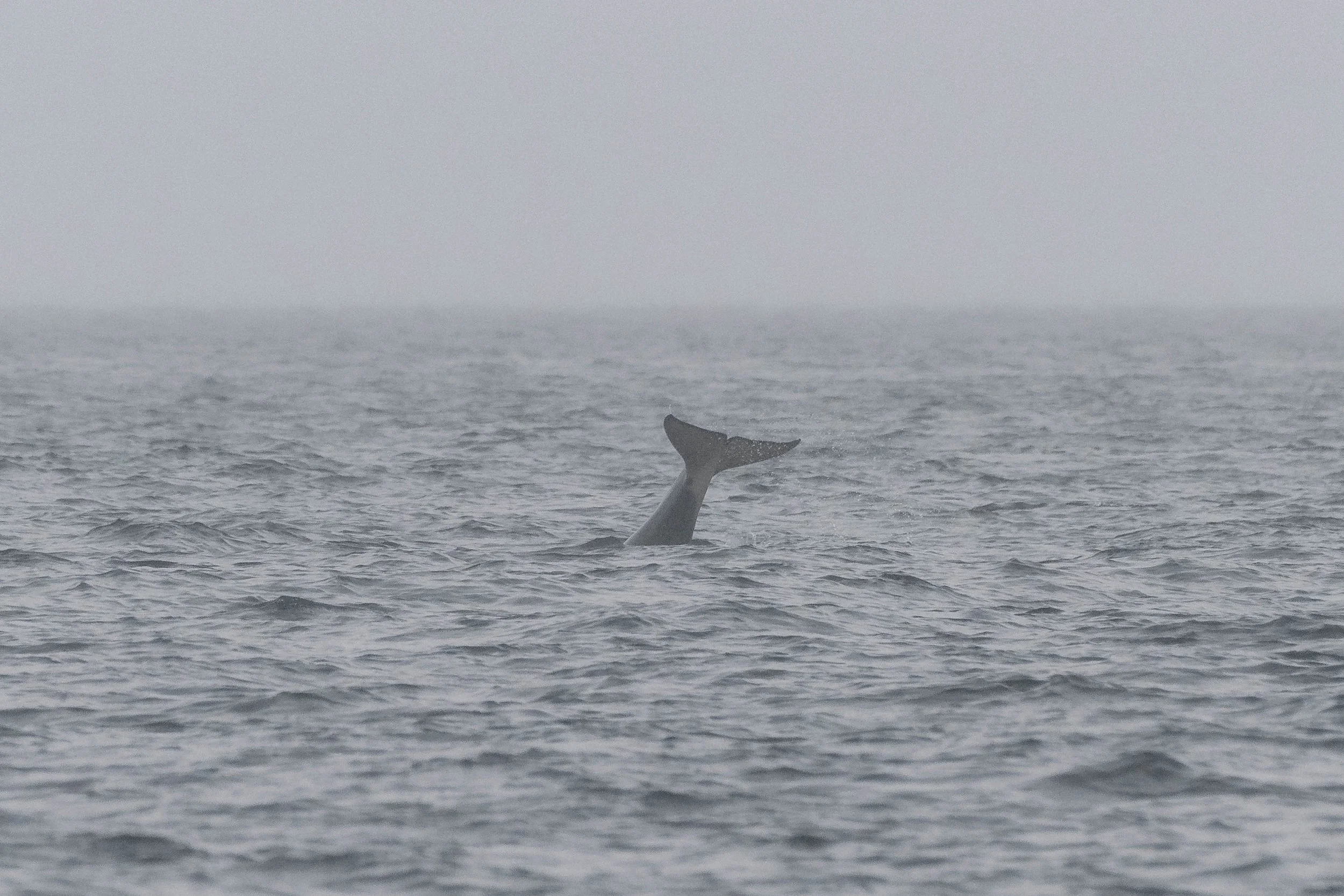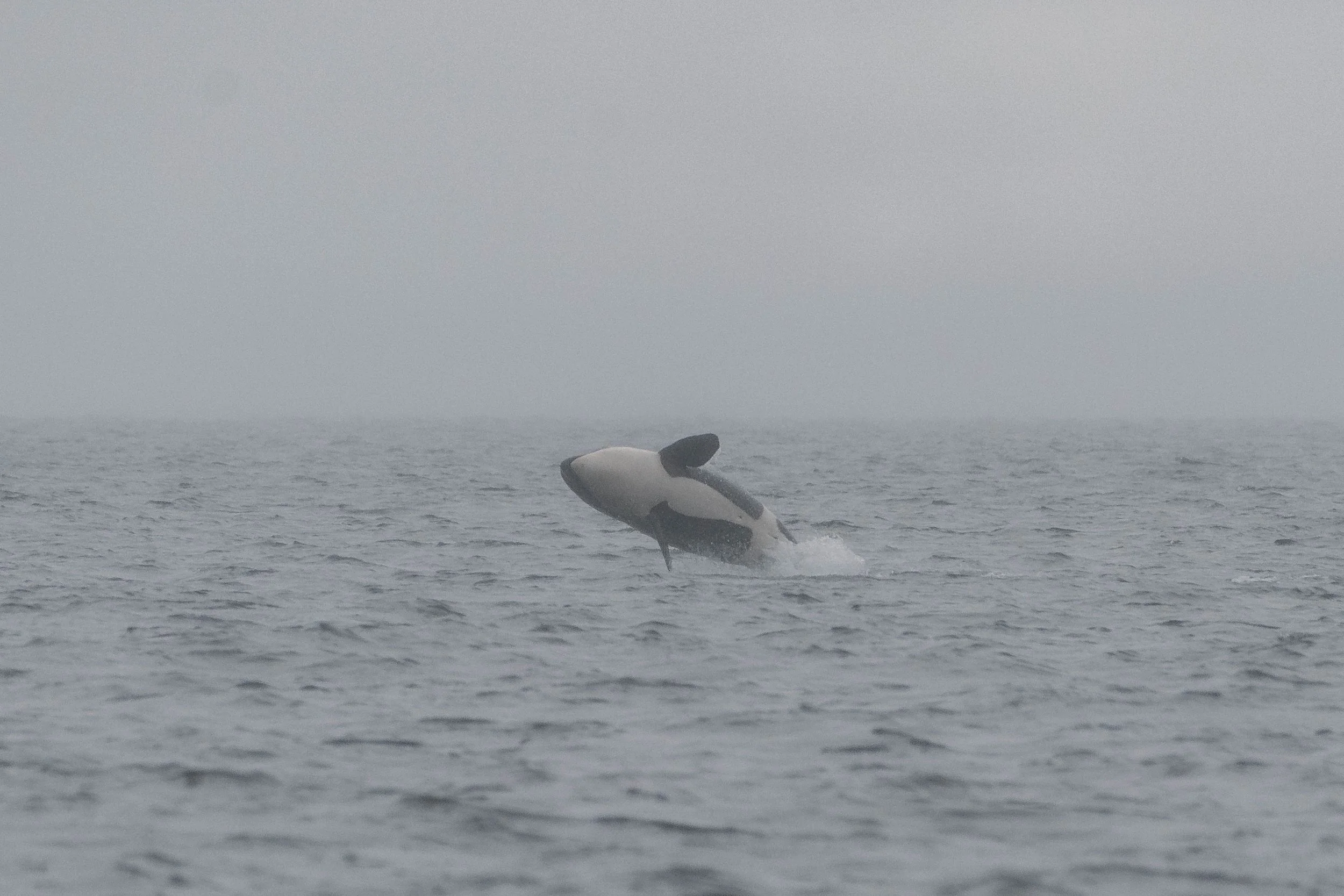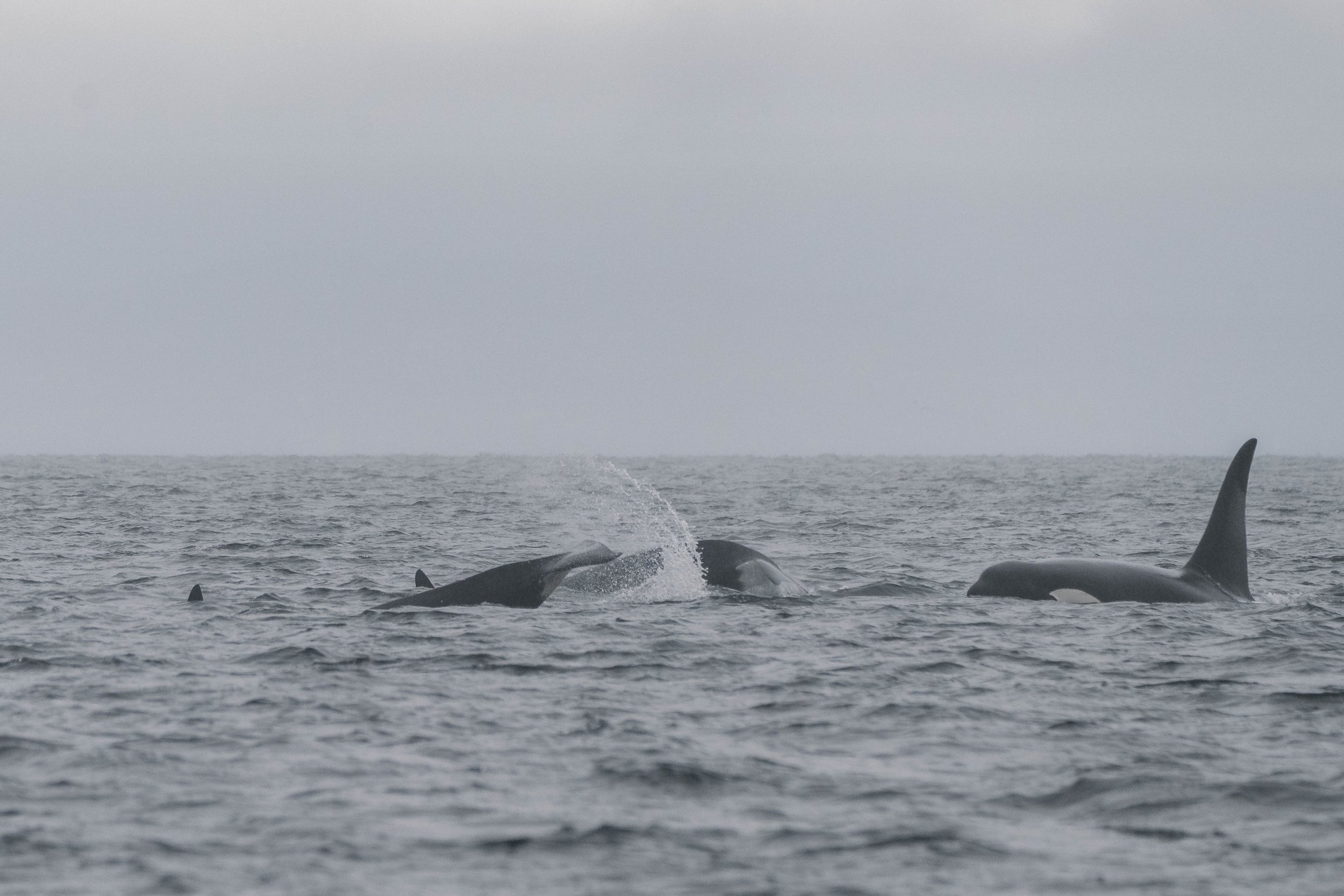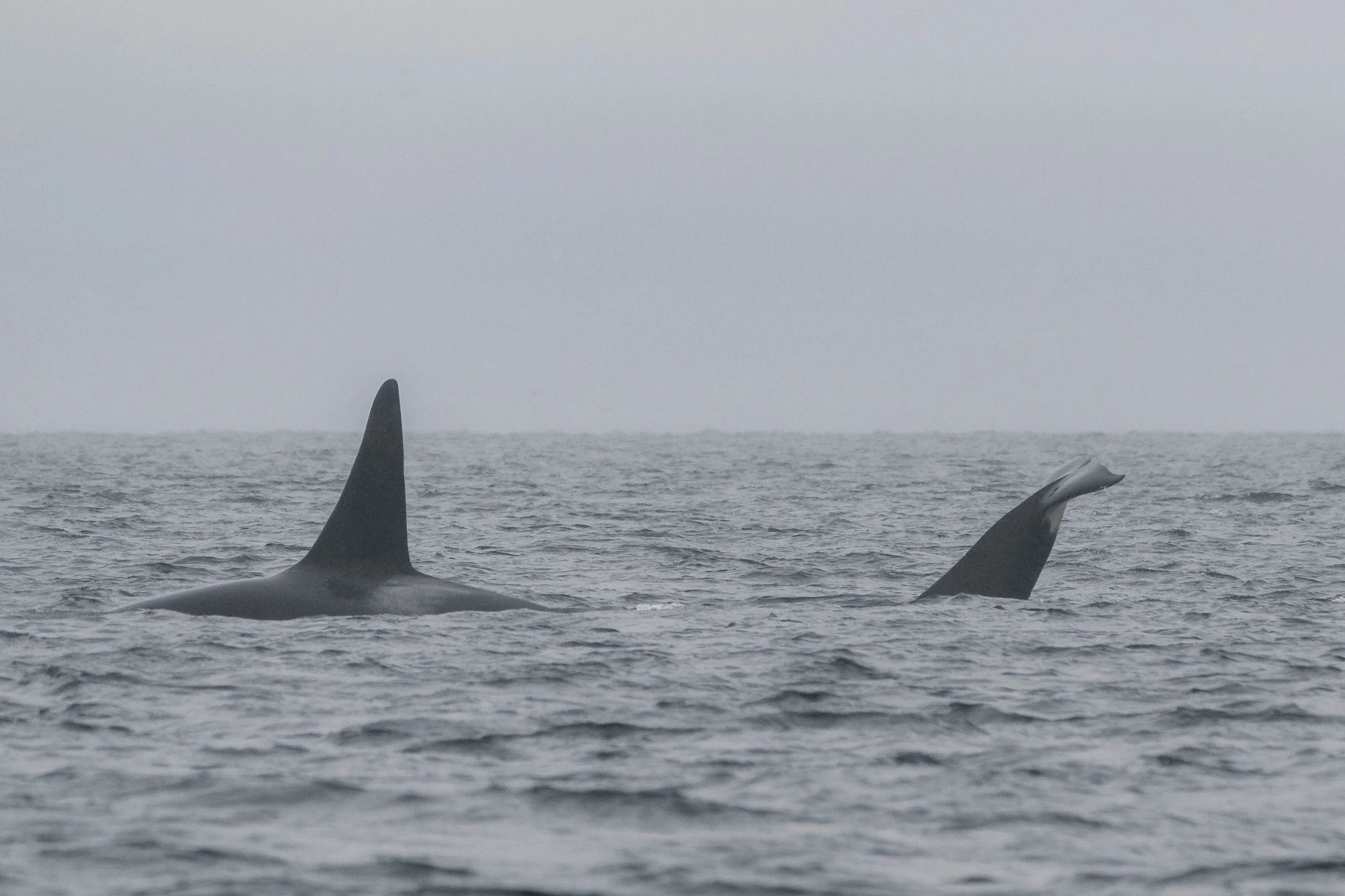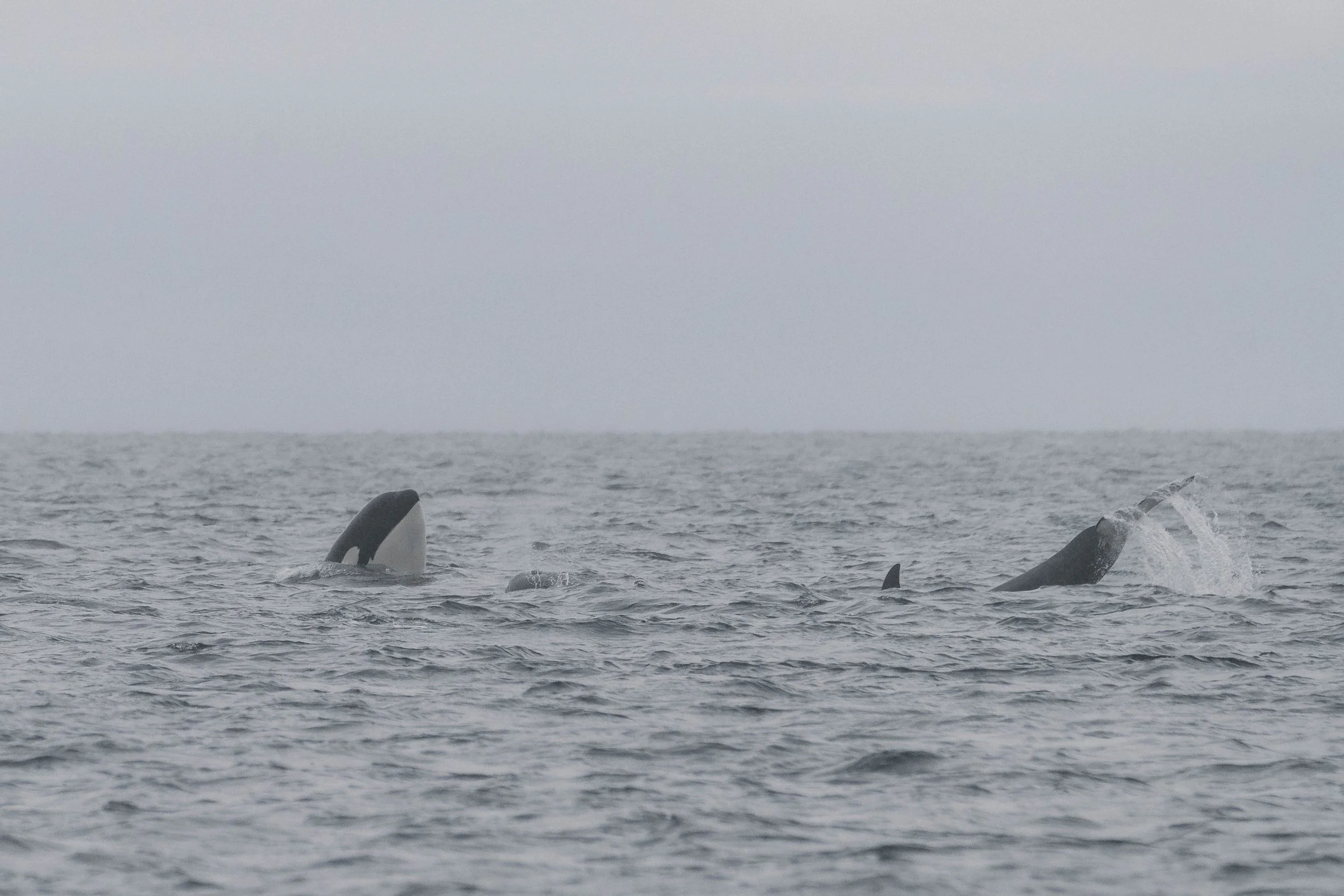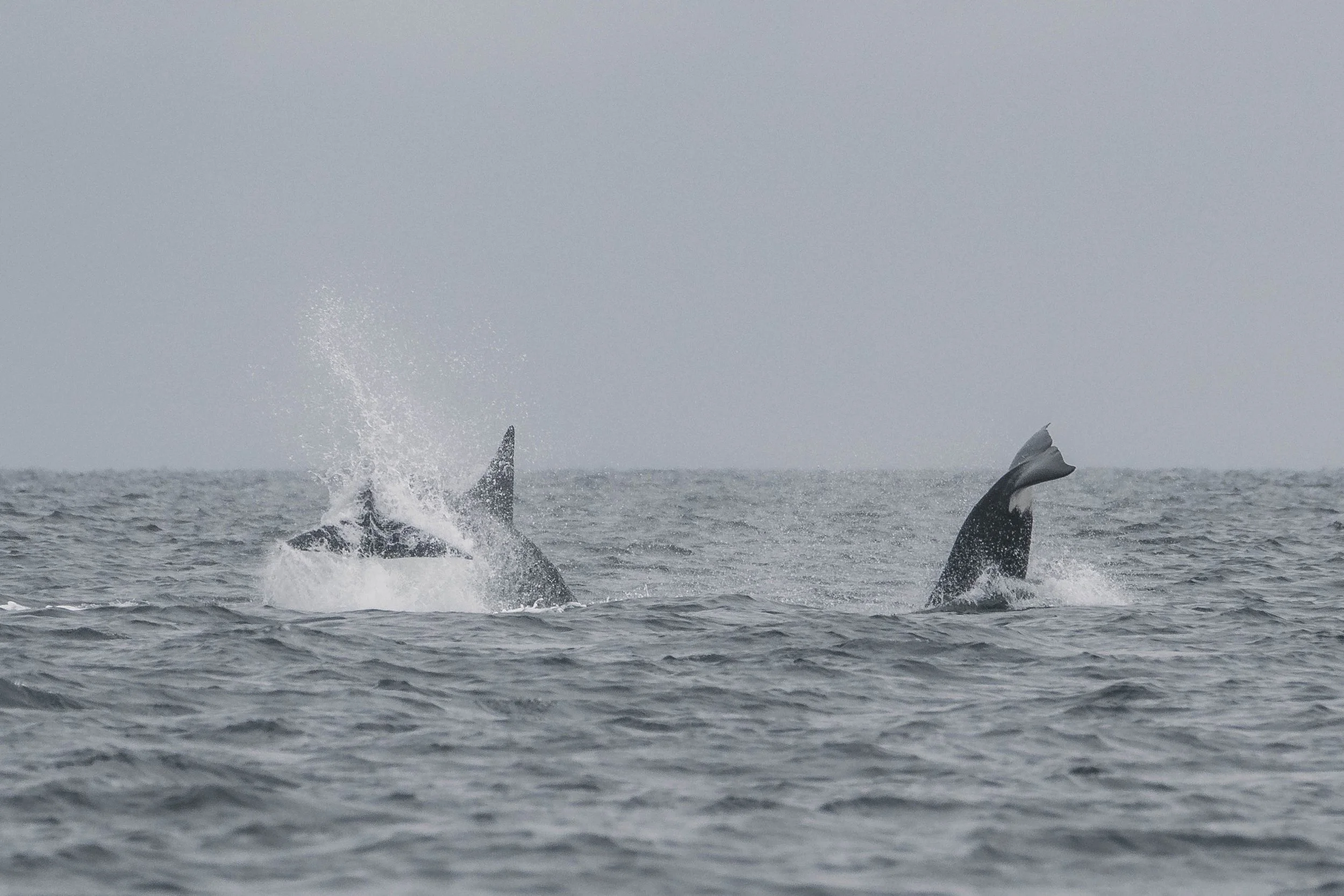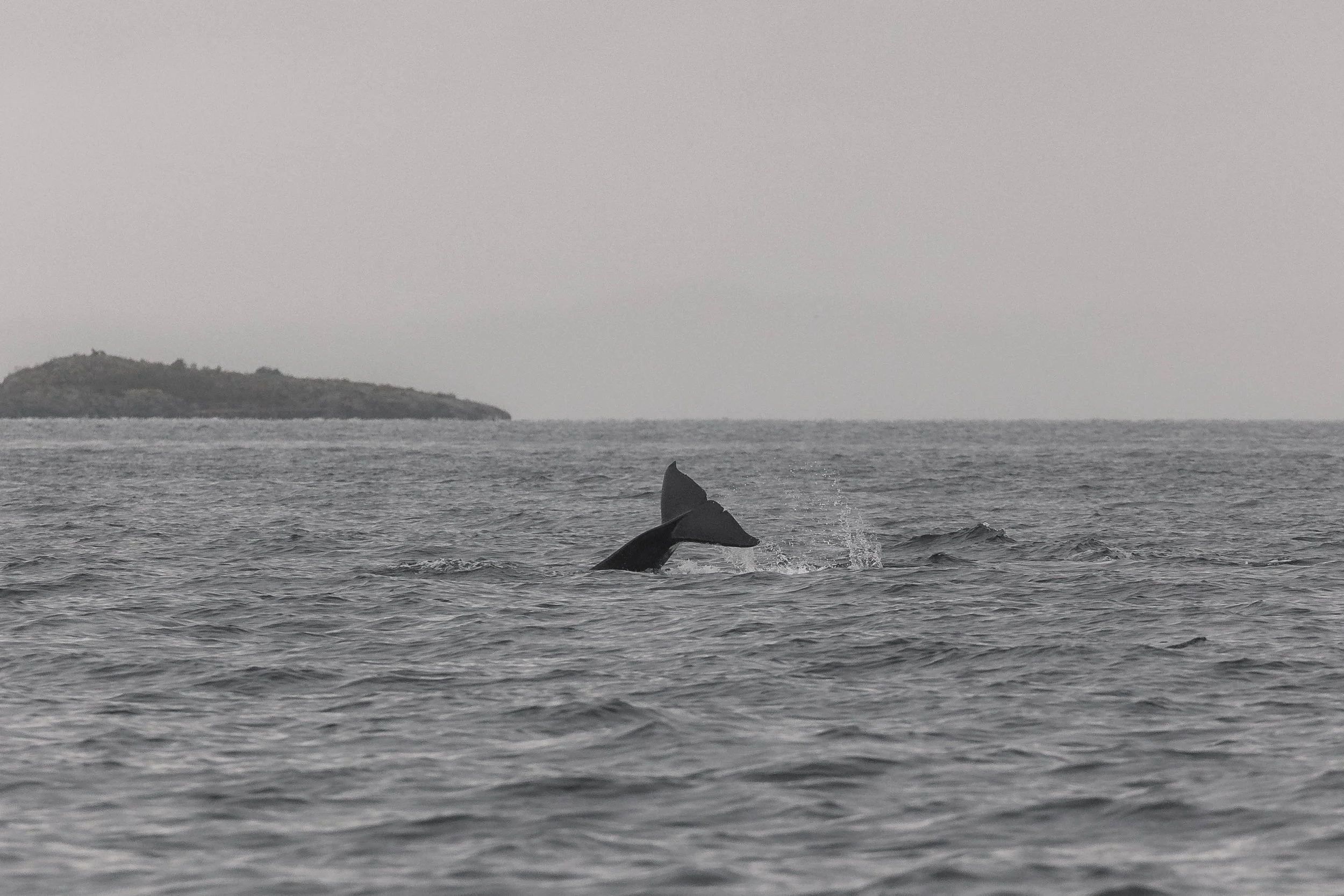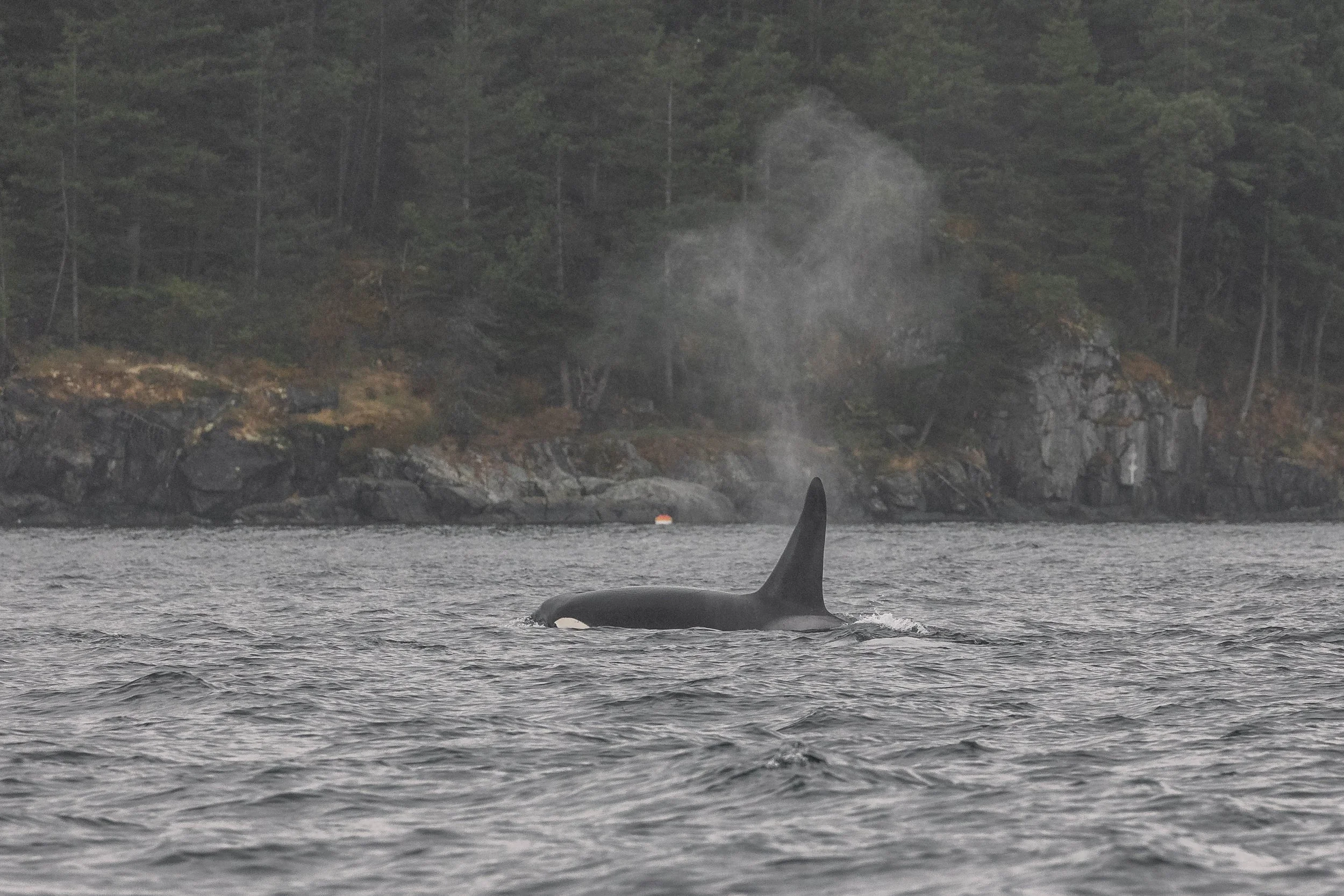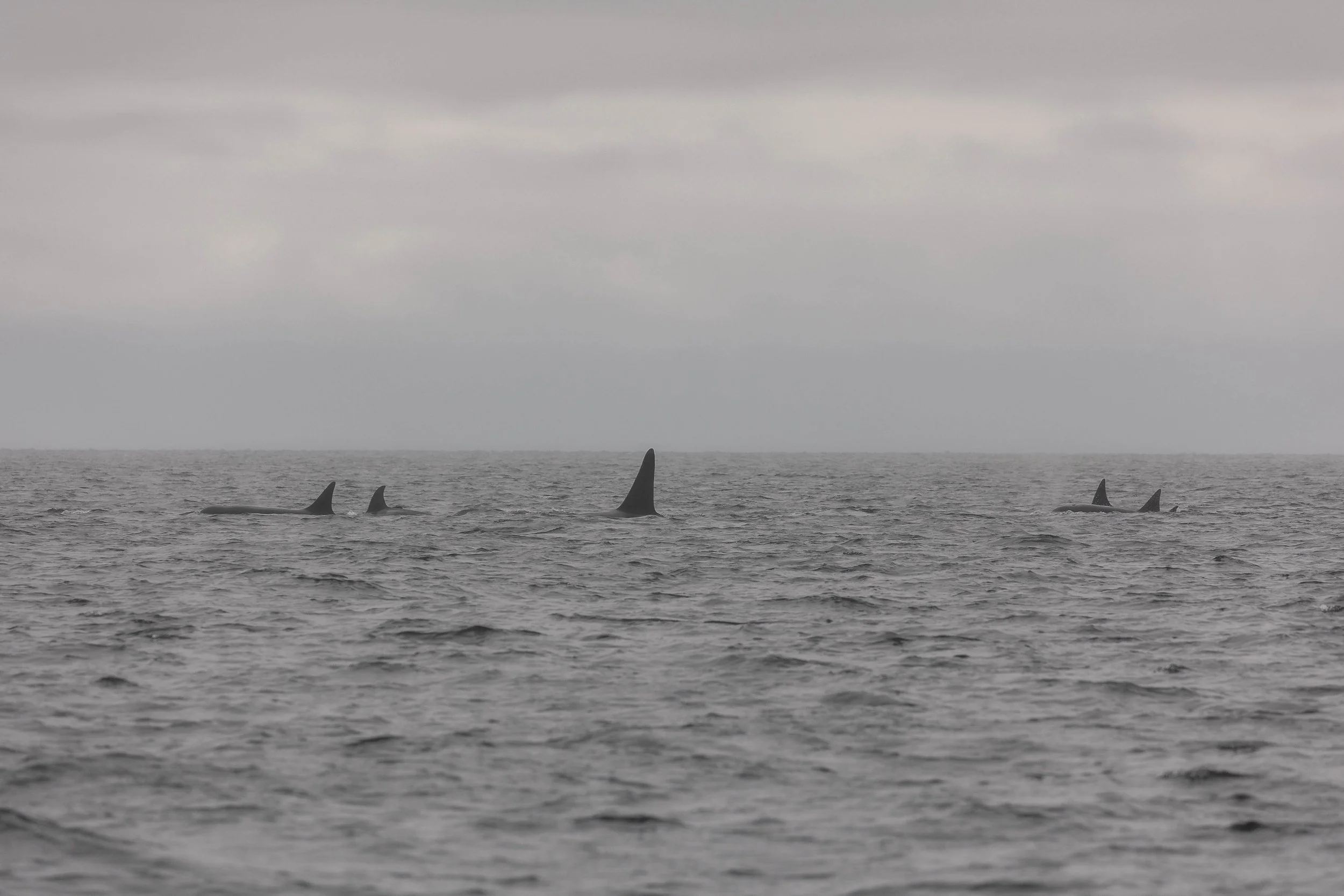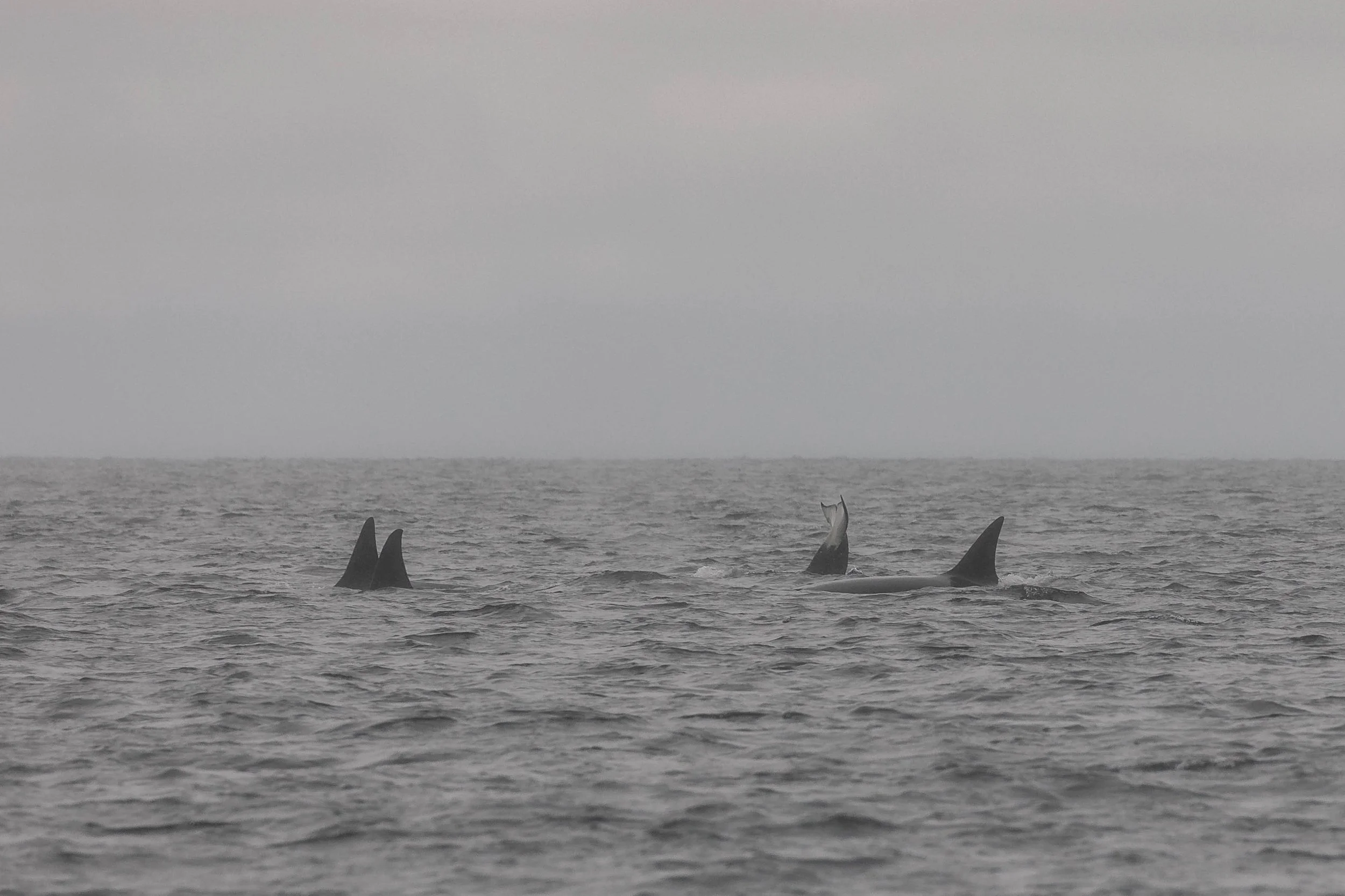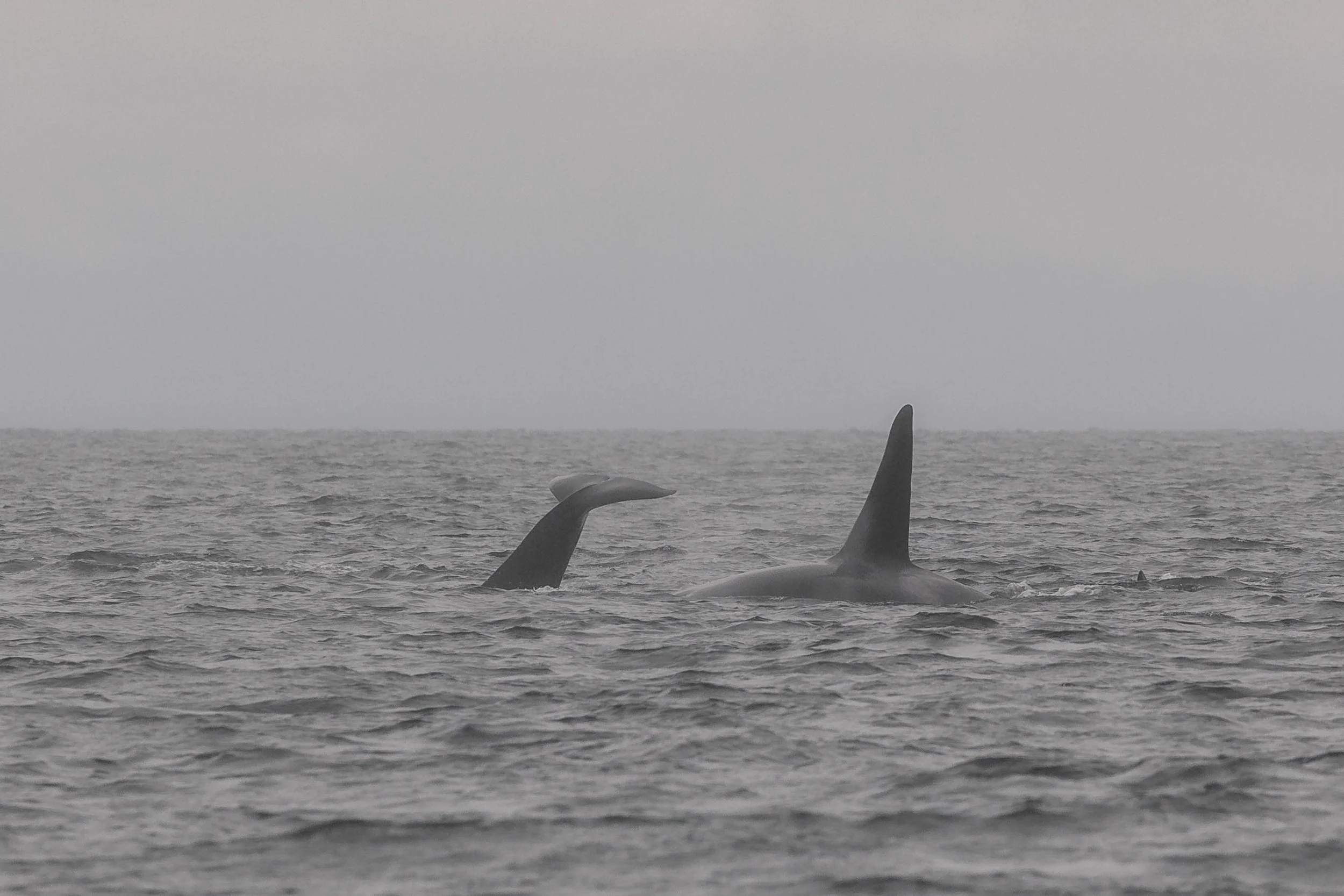September 14, 2025, 10:30 AM - Humpbacks in the waves, and a T-party along the Sunshine Coast
Another exciting day awaited us in the Salish Sea. We left Nanaimo, ready to embrace the adventure as we had two boats heading out into the Strait of Georgia.
The Strait of Georgia is usually a great spot to find our whales, thanks to the nutrient-rich waters that fill this waterway. Things like islands, banks, and shelves change the flow of the ocean, mixing the water column and contributing to the extraordinary biodiversity we see here. Nutrient influx from the many rivers that drain into the Strait is also important for maintaining this high biodiversity, and interestingly, the animals that inhabit the region are also helping in this process. In particular, the first species that we spotted today, the humpback whales, play a very important part in this delicate balance.
We spotted the blows of the humpback whales in the distance at first, and as we approached closer, it became clear that three whales were travelling together here: Two Spot (BCZ0432), Fallen Knight (BCX0915), and Polyphemus (BCZ0342). These humpbacks would be here to feed over the summer months, building up as much of a fat reserve as possible before heading south once more for the winter months. When they are down south, they are in their breeding grounds, engaging in high-energy activities. The downside is that there isn’t much in the way of food for them while they are down south. The fat reserves that they build over time here are what will be powering those activities. While they are here, they are also helping to maintain the high productivity of their feeding grounds through the mixing of the water column. They dive deep to feed, typically going between 100 and 200 meters below the surface. When they resurface, they will be dragging some of that cooler, deeper water with them to the surface, helping to increase productivity. They are also moving nutrients with this feeding method, since they are always defecating at the surface. This deposits the concentrated nutrients back at the surface in a usable state for the Phytoplankton to use! It’s a great, positive feedback loop, since the more humpbacks return here to feed, the more productivity increases, and the more humpbacks, the ecosystem will be able to hold!
We had this in mind while watching these three travelling together, marvelling at their graceful ability to move through the waves before showing off their massive, 18-foot-wide tails, before dipping below the surface once more. After enjoying our time with these giants, we started to head towards another impressive area: the White Islets. This small, rocky island is located off the Sunshine Coast and is one of our favourite places to visit thanks to the huge diversity of life that spends its time there. Steller Sea Lions congregate in huge colonies, the large males fighting for the best position on the rocks, with the smaller Harbour Seals spending their time lounging on the rocks nearby. There are also shore birds dotting the shoreline, resting or taking time to pick through the surf for food.
While spending time here, we got word of another sighting based on shore not to far from here, a pod of orca travelling this way, so we headed that direction with both of our boats and found what could only be described as a T-party happening! It was three pods of orca travelling together, who we were able to identify as the T101s, T123s, and T124Ds! That means the following whales were present:
T101 Reef ♀ (≤1969)
T101A Rush ♂ (1993)
T101B Lagoon ♂ (1997)
T123 Sidney ♀ (1985)
T123A Stanley ♂ (2000)
T123C Lucky ♀ (2012)
T123D Darcy ♀ (2018)
T124D Field ♀ (1996)
T124D1 Salish II (2014)
T124D3 Lupine (2022)
T124D4 Dune (2024)
A T-party is a name generally given to any group of Transient orca that are travelling together with more than one pod present. A lot of the time this comes along with a lot of socalizing behaviours like surface activity, vocalizations, and potentially breeding opportunities happening. Orca are incrediably social animals and value their time spent with members outside of their matriarchal pods. Seeing other individuals is usually cause to celebrate! We don’t always see the celebration continue for long after the group meets up, since it’s a lot of energy to be spending, but the expendadure didn’t seem to matter to these whale today, as we saw nearly every surface behaviour you could imagine as we watched. Time and time again we saw the younger whales jumping from the water, all individuals slapping their tails on the surface, swimming forward, backwards, and sideways. It was a lot of fun to watch!
The T101s and T124Ds have been spending quite a bit of time togeter recently, but last time we saw the T123s, just a cpuple of days before, they were with a completely different pod. It really shows how fluid the interactions between orca pods can be, and drove home what a special experience we were having with this group.
But, all good things must come to an end, and our time was nearly up, plus there was a long way home, so we left these whales to their partying. We crossed through the waves on the way home until we once again found ourselves in the Nanaimo Harbour. It was un unforgettable experience on the water, and the photos captured by the Marine Naturalists Val Watson and Desarae Poier will help keep these memories alive forever! Please enjoy them below.
Two Spot going for a dive. Photo by Val Watson.
Two Spot (left) and Polyphemus (right) surfacing together. Photo by Val Watson.
Fluke waterfall from Two Spot as he dives. Photo by Val Watson.
From the underside of his tail, you can see where Two Spot got his name from. Should it really be Four Spot? Photo by Val Watson.
Two Spot surfacing beside Polyphemus diving. Photo by Val Watson.
The underside of Two Spot’s tail. Photo by Val Watson.
Two Spot diving in the waves. Photo by Desarae Poier.
Fallen Knight going for a dive. Photo by Desarae Poier.
Fallen Knight has a very unique tail, one side being bent at nearly a 90 degree angle. Photo by Desarae Poier.
Two Spot going for a dive. Photo by Desarae Poier.
Fallen Knight lifting her tail to dive. Photo by Desarae Poier.
Polyphemus’ dorsal fin. Photo by Desarae Poier.
A beautiful fluke waterfall from Two Spot as he goes for a dive. Photo by Desarae Poier.
Can you spot the barnacles on the edge of Fallen Knight’s tail as she dives? Photo by Desarae Poier.
Steller Sea Lions striking a pose on the White Islets. Photo by Val Watson.
Curious Sea Lions watching us from the water. Photo by Val Watson.
Steller Sea Lion lounging on the rocks. Photo by Val Watson.
A colony of Steller Sea Lions at the White Islets. Photo by Desarae Poier.
A silly looking Steller Sea Lion. Photo by Desarae Poier.
Harbour Seals and shorebirds sharing the shore line. Photo by Desarae Poier.
A big tail slap from one of the youngsters. Photo by Val Watson.
T124D Dune lifting their tail beside another doing a little back dive (presumably T124D3 Lupine). Photo by Val Watson.
T124D4 Dune doing a mini-breach. Photo by Val Watson.
T101A Rush surfacing with a couple tails in the air behind him. Photo by Val Watson.
T101 Reef breaching next to T124D1 Salish II. Photo by Val Watson.
Two tail slaps. Photo by Val Watson.
A big tail slap from one of the partying whales. Photo by Val Watson.
Little T124D4 Dune flicking his tail. Photo by Val Watson.
T124D4 Dun breaching, you can tell from this photo that he is a boy! Photo by Val Watson.
Two whales tail slapping in front of T101B Lagoon. Photo by Val Watson.
T101B Lagoon infront of anothe whale tail slapping. Photo by Val Watson.
T124D1 Salish II Spy hopping beside another tail slapping. Photo by Val Watson.
T123D Darcy doing a back dive. Photo by Val Watson.
More excitement with a cartwheel and a headstand from these whales. Photo by Val Watson.
A tail slap and a spy hop, with T101A Rush in the middle Photo by Desarae Poier.
One of the whales waving their tail. Photo by Desarae Poier.
A tail slap from one of the whales. Photo by Desarae Poier.
T124D1 Salish II doing a mini breach. Photo by Desarae Poier.
T101B Lagoon surfacing in the waves. Photo by Desarae Poier.
T101B Lagoon surfacing with another whale’s tail behind him. Photo by Desarae Poier.
Little T124D4 Dune doing a back dive. Photo by Desarae Poier.
Darcy surfacing on the left, with T123 Sydney sticking her face out of the water beside her. Photo by Desarae Poier.
T101 Reef spy hopping beside T124D1 Salish II. Photo by Desarae Poier.
T101 Reef, T123D Darcy. T101A Rush, T124D Field, and T124D1 Salish II surfacing in a line. Photo by Desarae Poier.
T101 Reef, T123 Sidney, and T124D Field surfacing with a tail flicking in the back. Photo by Desarae Poier.
More action on the water with a big tail slap on the left, with T101B Lagoon surfacing on the right. Photo by Desarae Poier.
A big tail slap beside T101B Lagoon surfacing. Photo by Desarae Poier.

